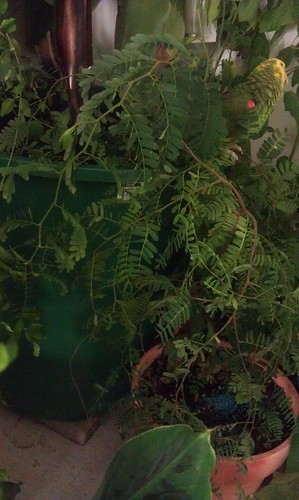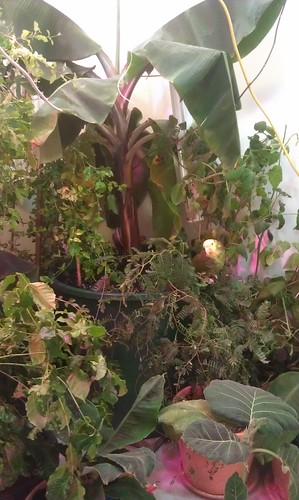So I recently moved from Hafnarfj÷rur to the 112 district of ReykjavÝk, where I'm renting converted (well, 80%-finished-being-converted) industrial space as an apartment. I chose the place because it's cheap, concrete floors, and ridiculously high ceilings for my plants. Tonight I finished moving my plants into their home. So, let's begin the tour! Note: most plants I show I have multiple of, but I'm not going to bother taking a pic of every last one, lol

First, the grow area (I could expand it threefold if necessary without impinging on my living area, and I'm only using about 70% of the area I've cordoned off):
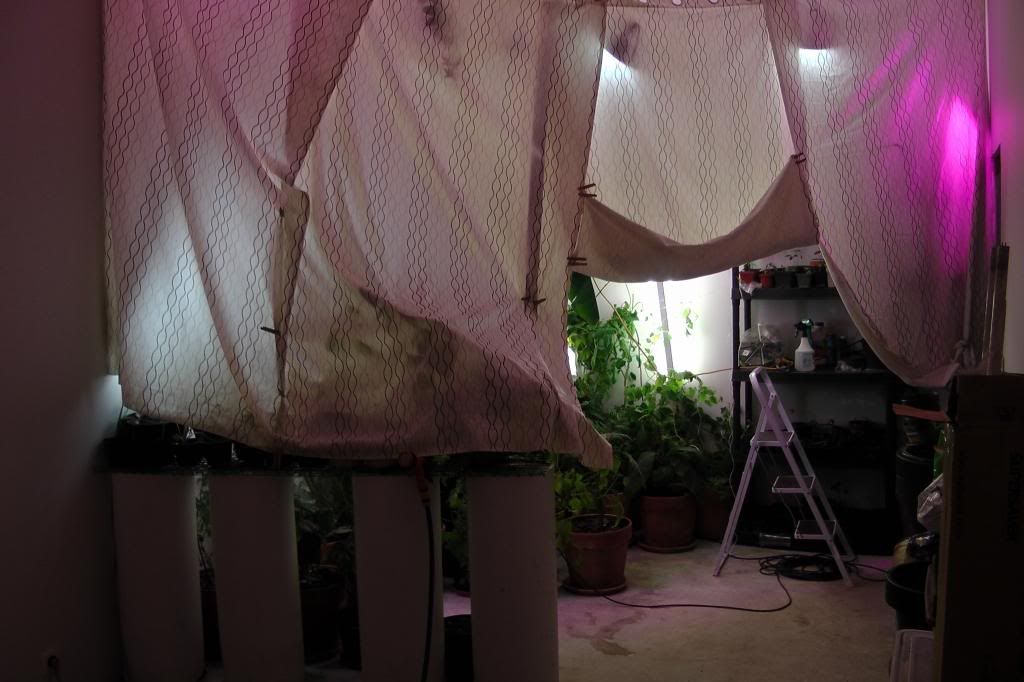
To give a sense of its height:
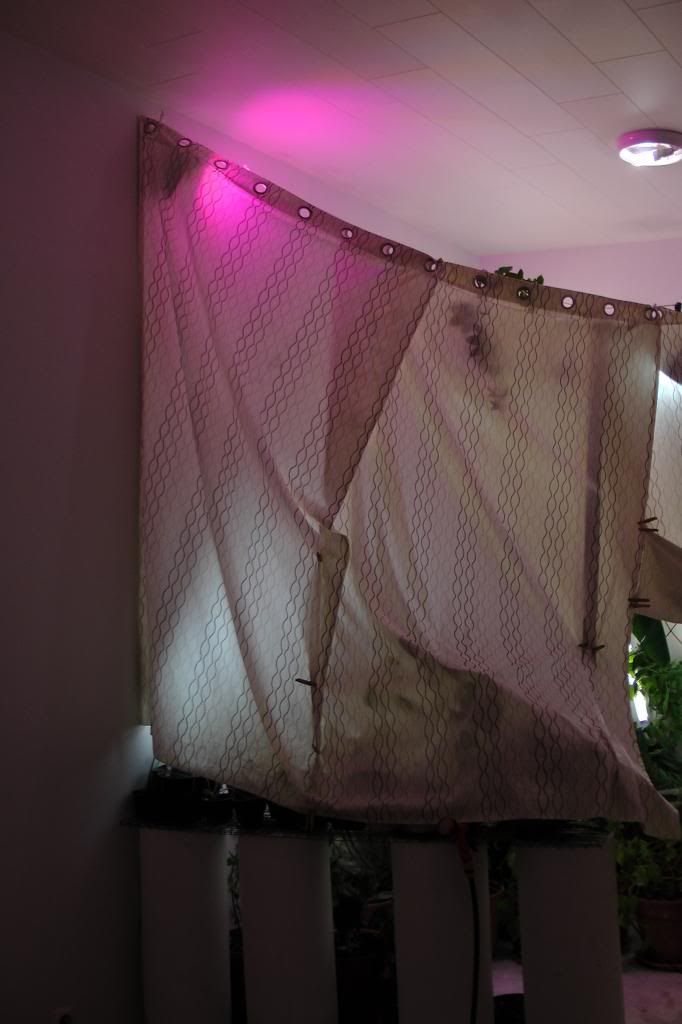
A couple glances around:
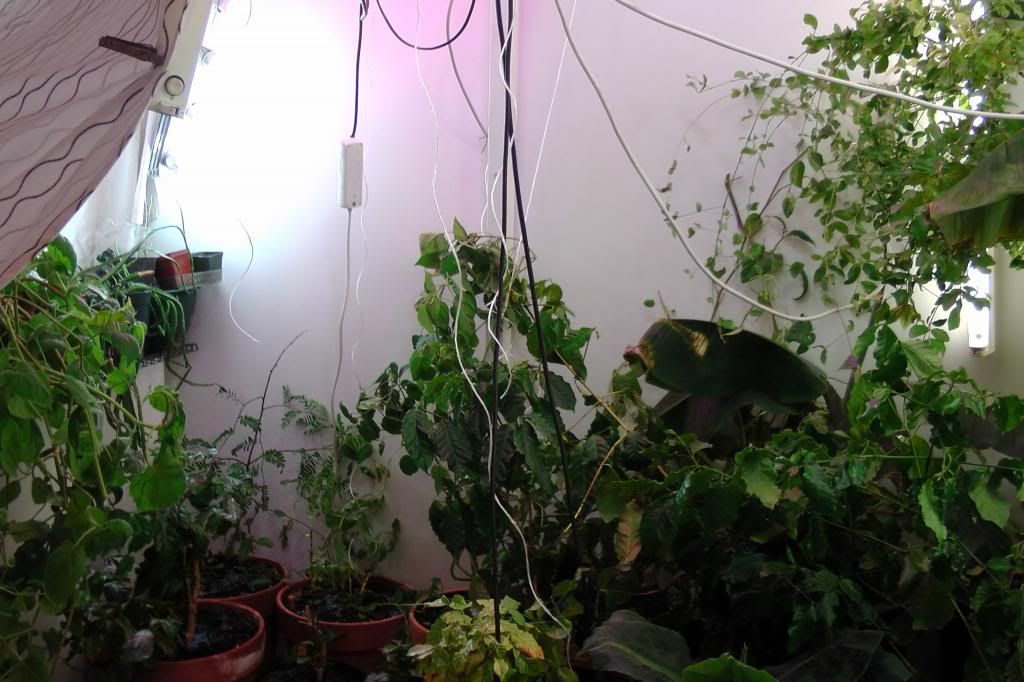
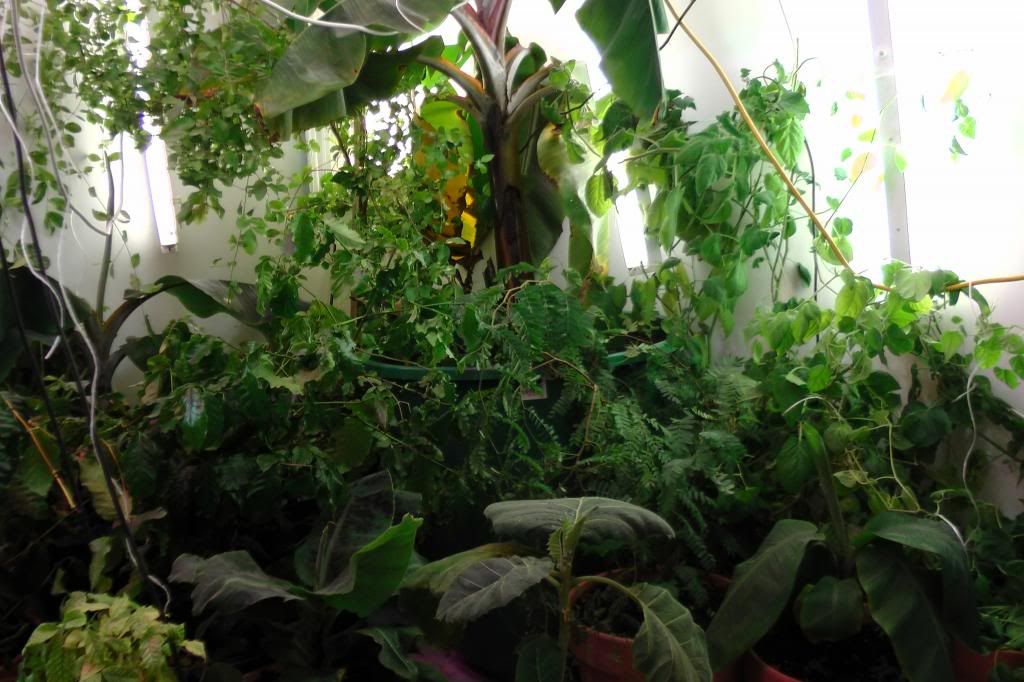
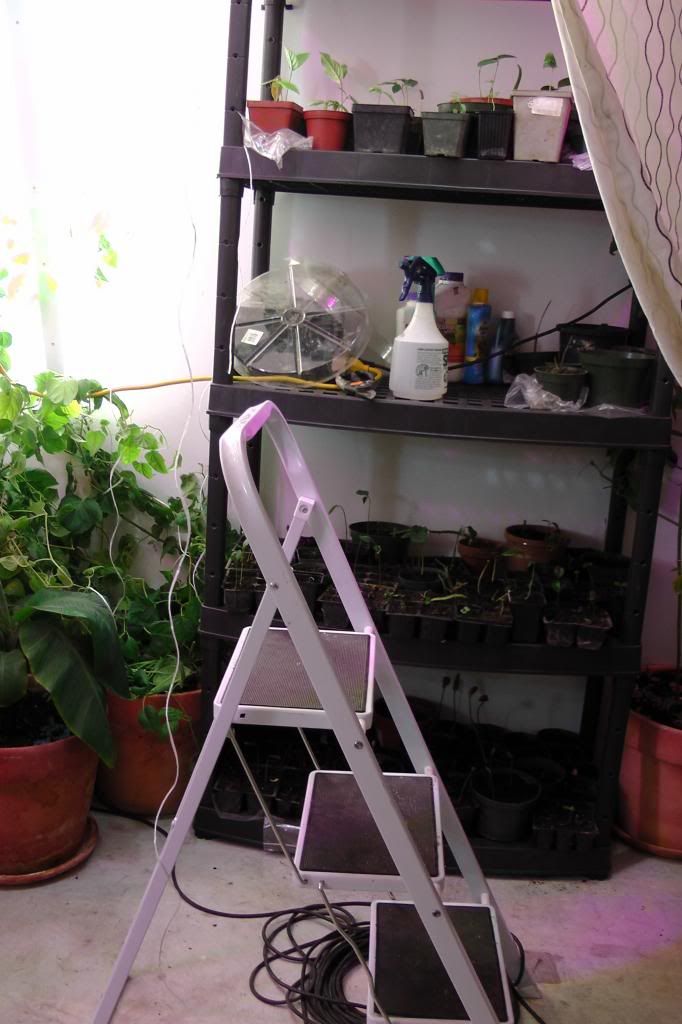
... and up:


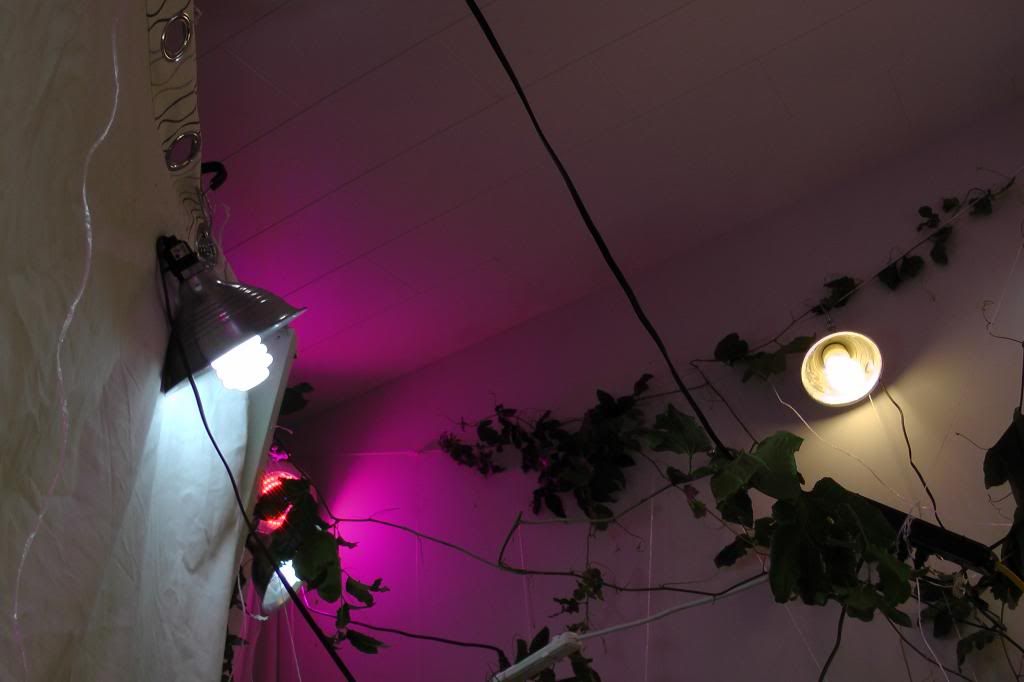
Now, on to the species.
Cape Gooseberry (Physalis peruvianis; Icelandic: blŠjuber ("breezeberry")). Basically a weed. Was my first plant to have fruit reach maturity in Iceland, although my passionfruit and mango tried but failed earlier; I've gotten a few dozen off of them. Stems break easily and it litters leaves, but everything it loses grows back twofold. Never had a single pest on them, even spider mites.
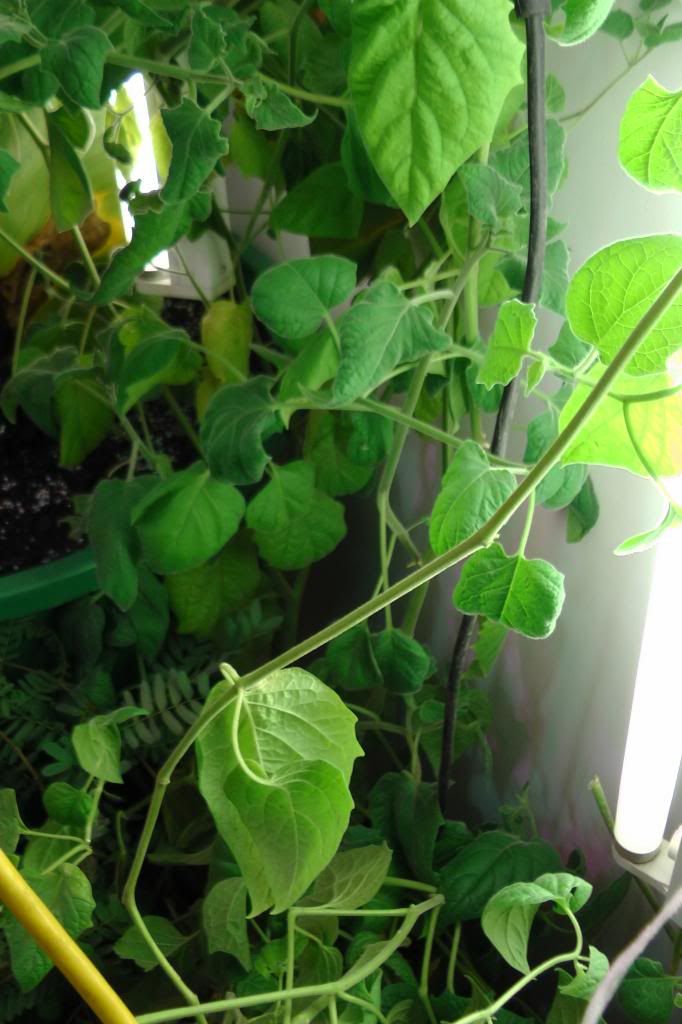
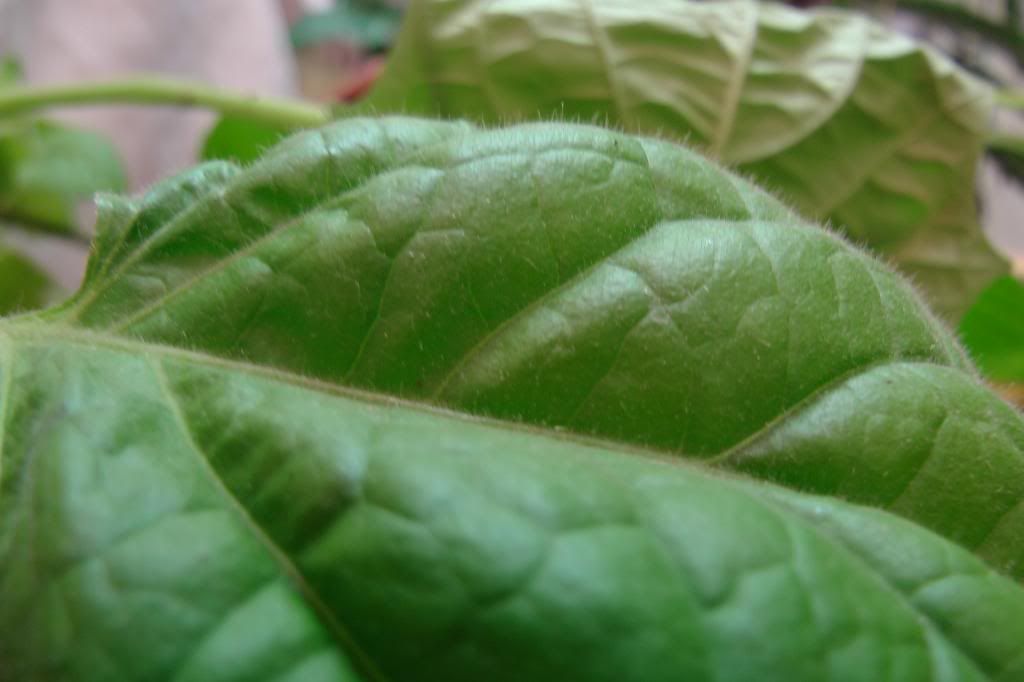 Jamaican dwarf red banana
Jamaican dwarf red banana (Musa acuminita. Icelandic: banani). All bananas seem to grows great indoors - just give them rich soil and tons of water. The red has especially beautiful coloration. Indoor bananas occasionally gets spider mites, but rarely a threat to the tree's life even if they go undetected for a while. Also, note the last picture - I'm not sure what these are, but I saw them next to some spider mite webbing while photographing.
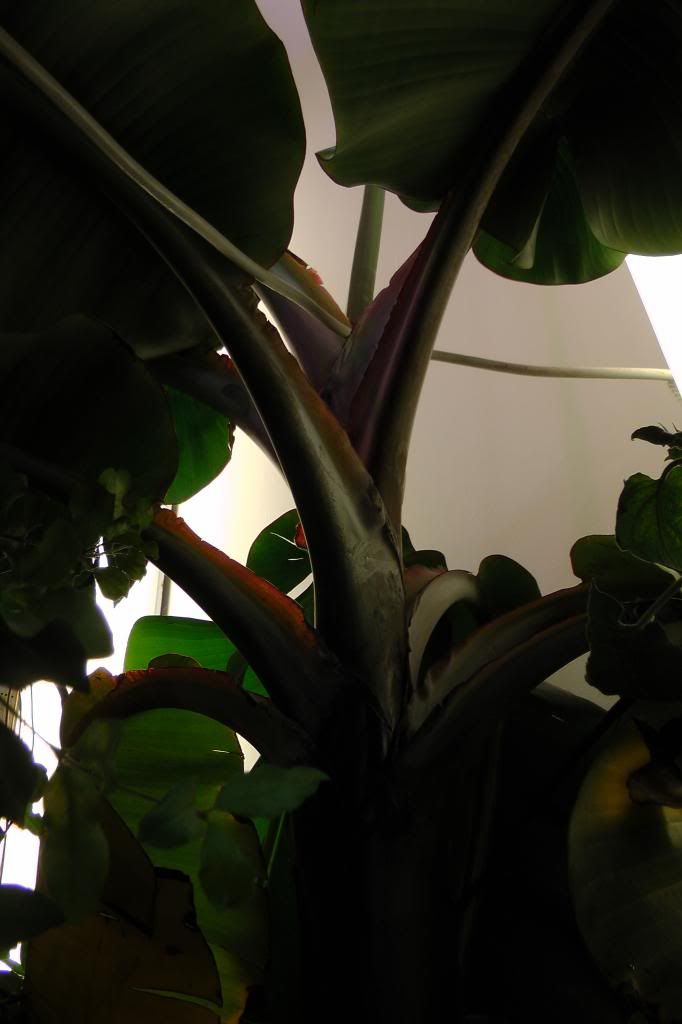
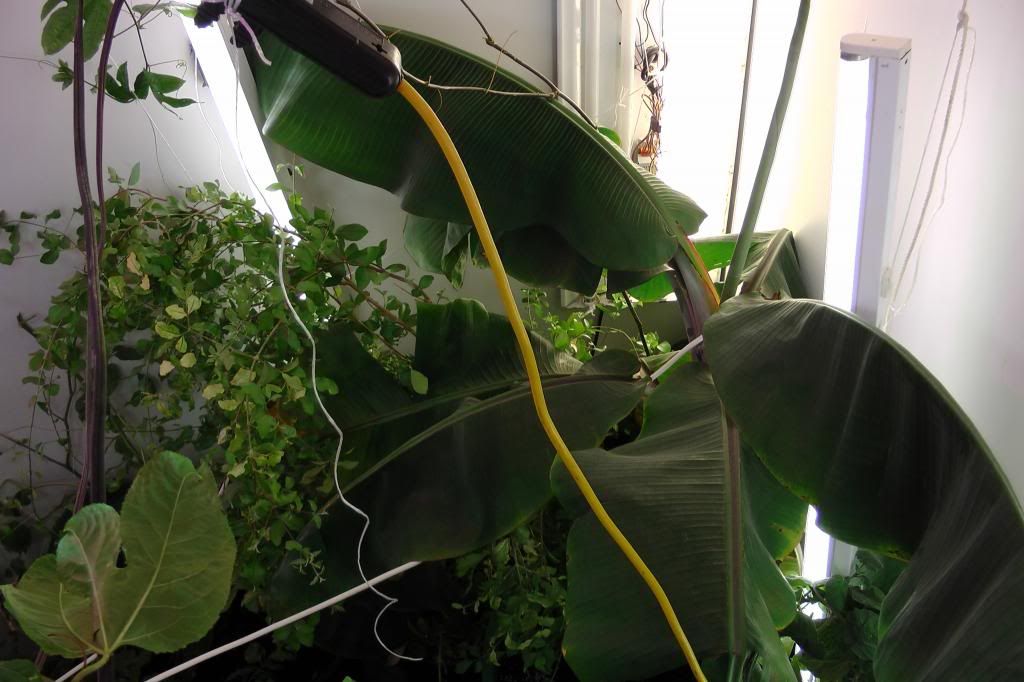
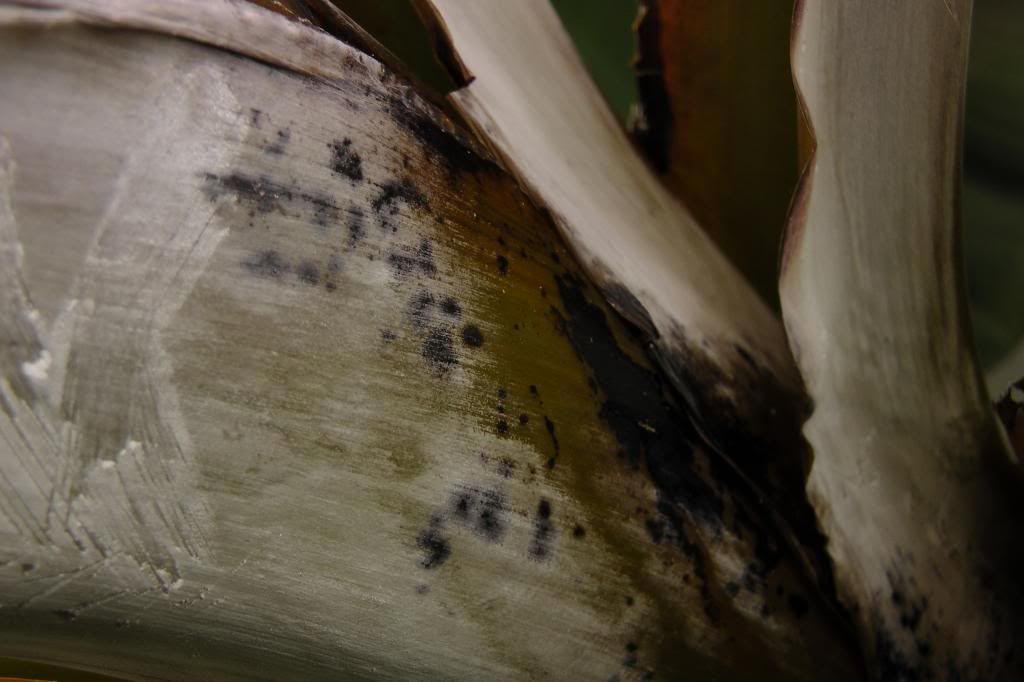
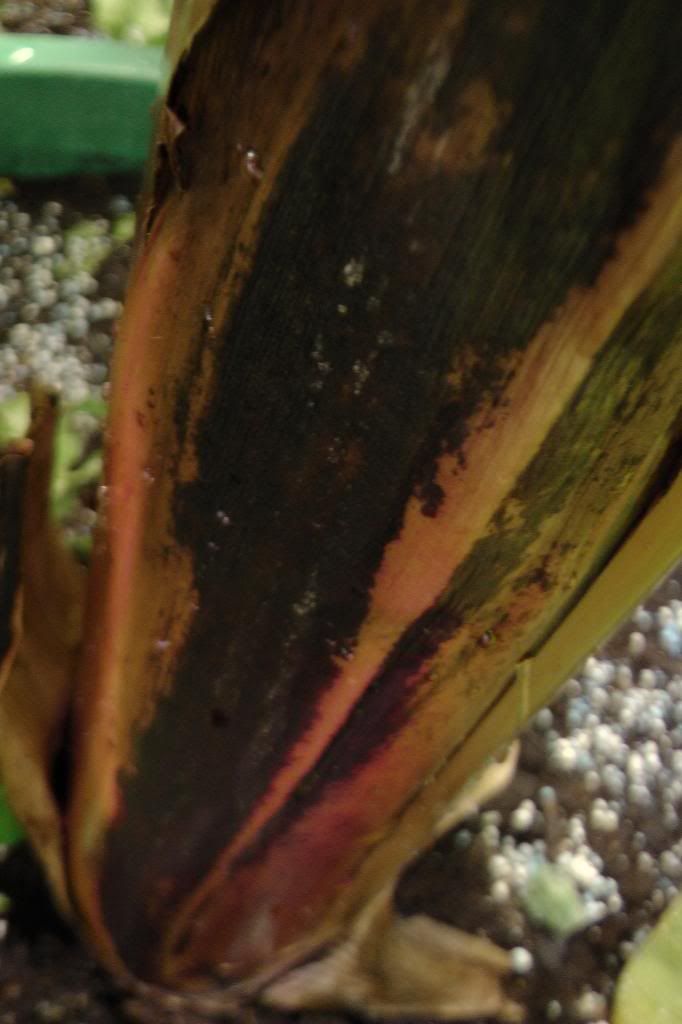
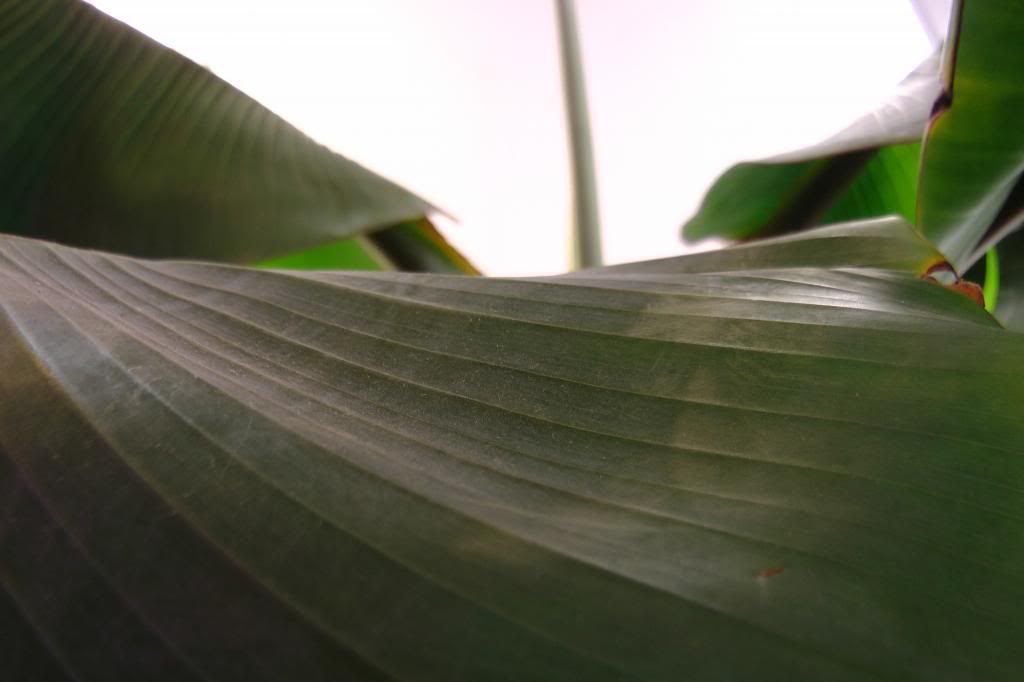
 Tamarind
Tamarind (Tamarindus indica. Icelandic: none). Pretty much minds its own business and grows at a moderate pace, I've never had problems with it. I did however while doing closeups find a couple leaves (below) which had some mottling - possibly a fungus of some sort? Doesn't seem to be a problem for any of my tamarinds as a whole, at least thusfar.
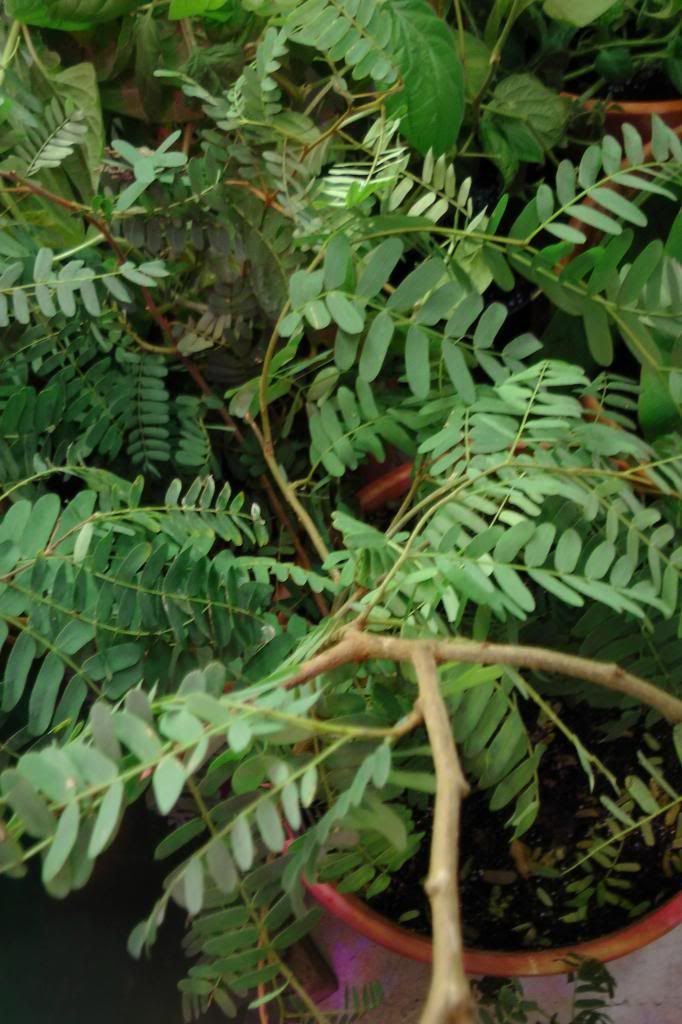
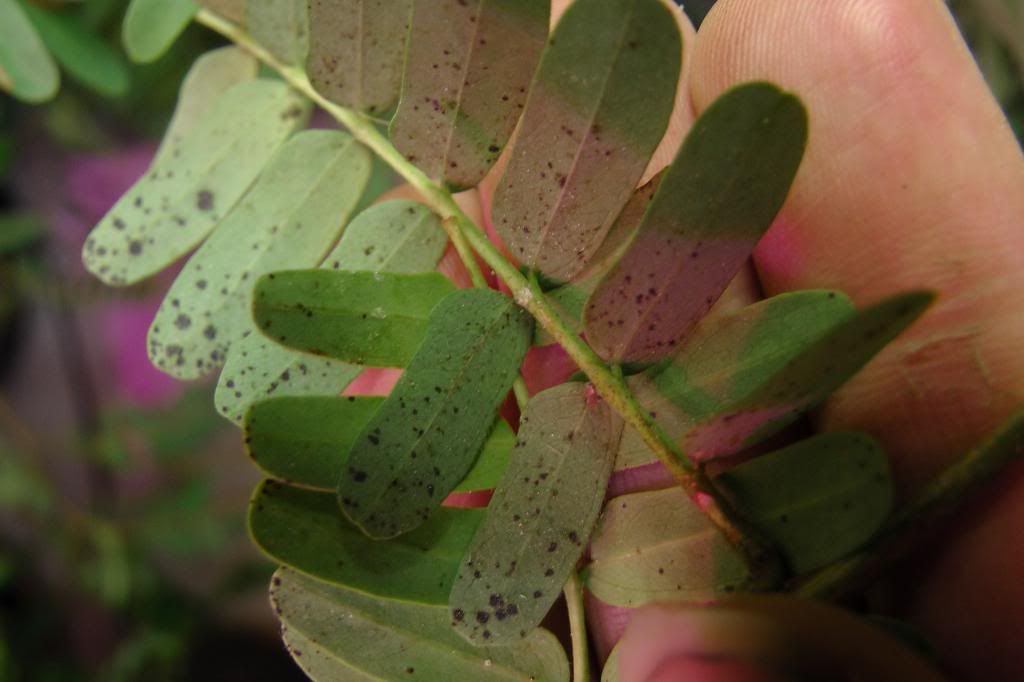 Acerola / barbados cherry
Acerola / barbados cherry (Malpighia emarginata. Icelandic: none). While this shot is a bit close in, the tree is huge - the main branch kinda droops, but if I keep it upright, the tree is about 3 meters tall. It's fruited for me. You can see it flowering here. Low maintenance, fast growing, well suited for indoor gardening.
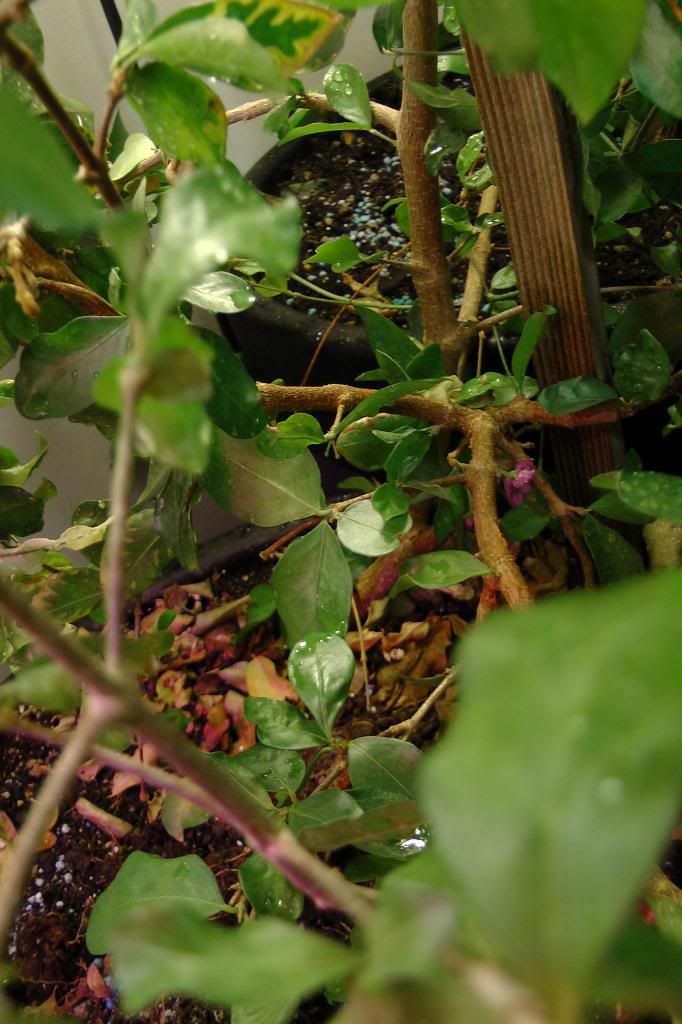 Dwarf cavendish banana
Dwarf cavendish banana (same species as the Jamaican Red): I actually picked this one up in Iceland, lol - the only fruiting tropical I've managed to find here. People have indeed fruited bananas here - although contrary to widely reported myth, we're not "the largest banana grower in Europe" (that'd be Spain; bananas here have only been grown on an experimental basis, not commercially).
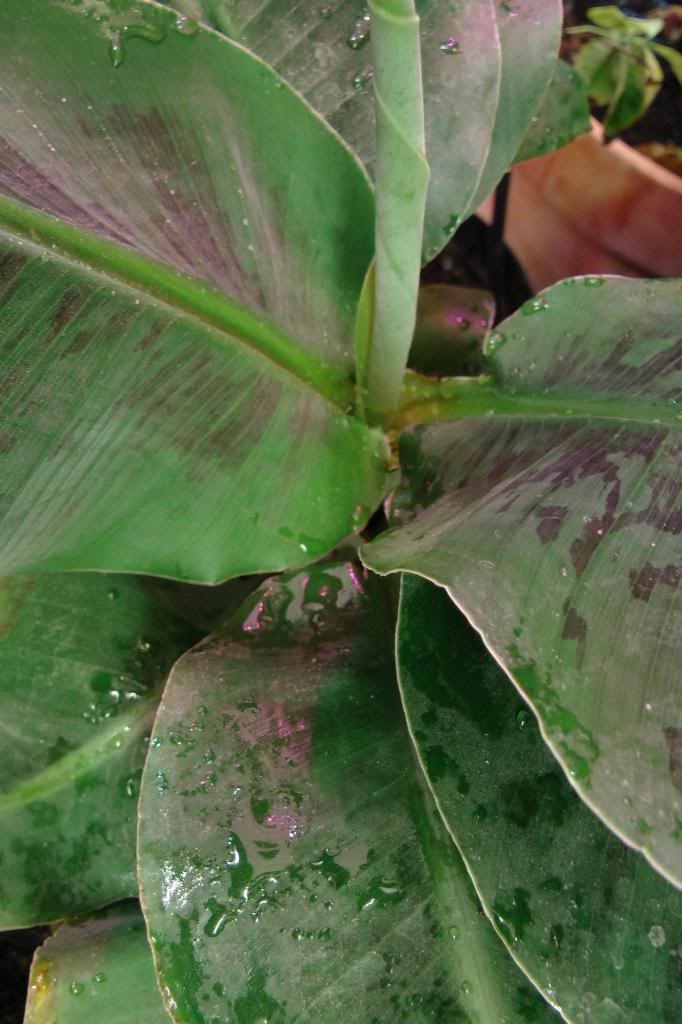 Passionfruit
Passionfruit (Passiflora edulis; Icelandic: ßstaraldin (lit: "lovefruit")): I forget which variety, and I don't remember the color of the flower, sadly! I'll pay more attention the next time around

Grows quite well - the only pest problem I've ever had was a small amount of scale at one point, but the scale didn't really seem to thrive on it. I wonder if it's aided by the sticky droplets it exudes at the base of each leaf?
 Coffee
Coffee (Coffea arabica. Icelandic: kaffi). Moderate-speed grower, generally pest free, likes moist soil but will tolerate dry, likes light but will tolerate shade... quite the little trooper

I had one actually get to flowering back when I lived in Iowa, but it was obviously too large to take with, I had to give it away. But I think some of mine here are nearing flowering size, so I've got my fingers crossed.

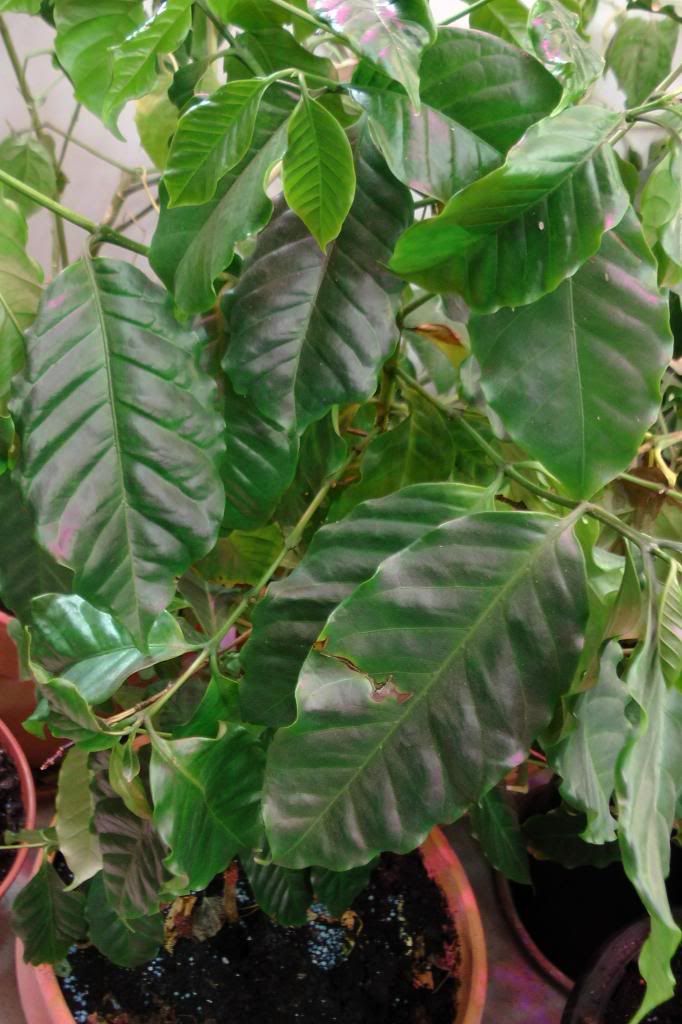
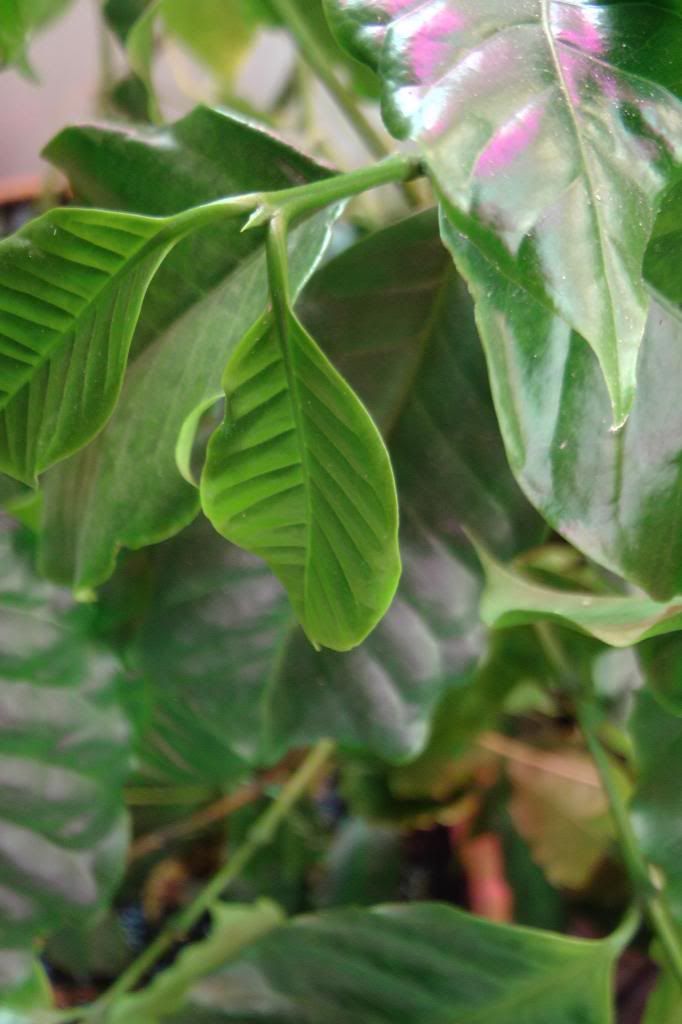 Pitaya / Dragonfruit
Pitaya / Dragonfruit (Hylocereus sp.; Icelandic: drekaßv÷xtur): Iceland has a region called the Dragon Zone (DrekasvŠi), where lots of oil has been found offshore. Now I have my own "Dragon Zone" in my grow area.

Dragonfruit grows well indoors, although not always super-fast. Its tiny roots mean not much of a potting requirement. Sometimes pieces break off, but that simply means you get more dragonfruit plants - they're trivial to root, you pretty much just have to drop them on some moist soil and leave them alone for a couple weeks. And they're generally pretty carefree.
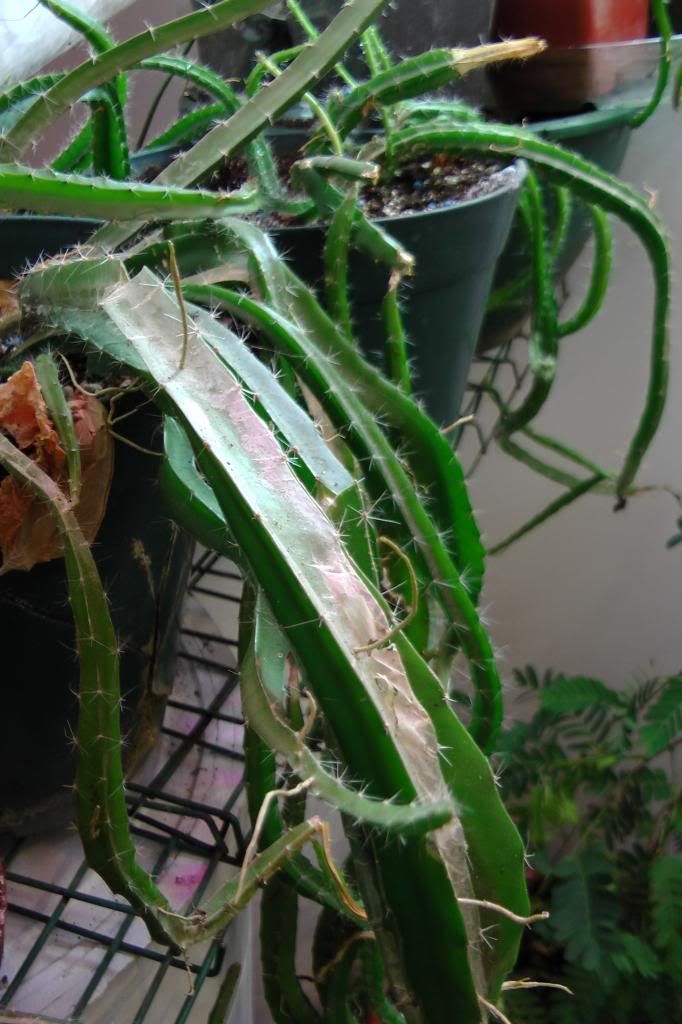
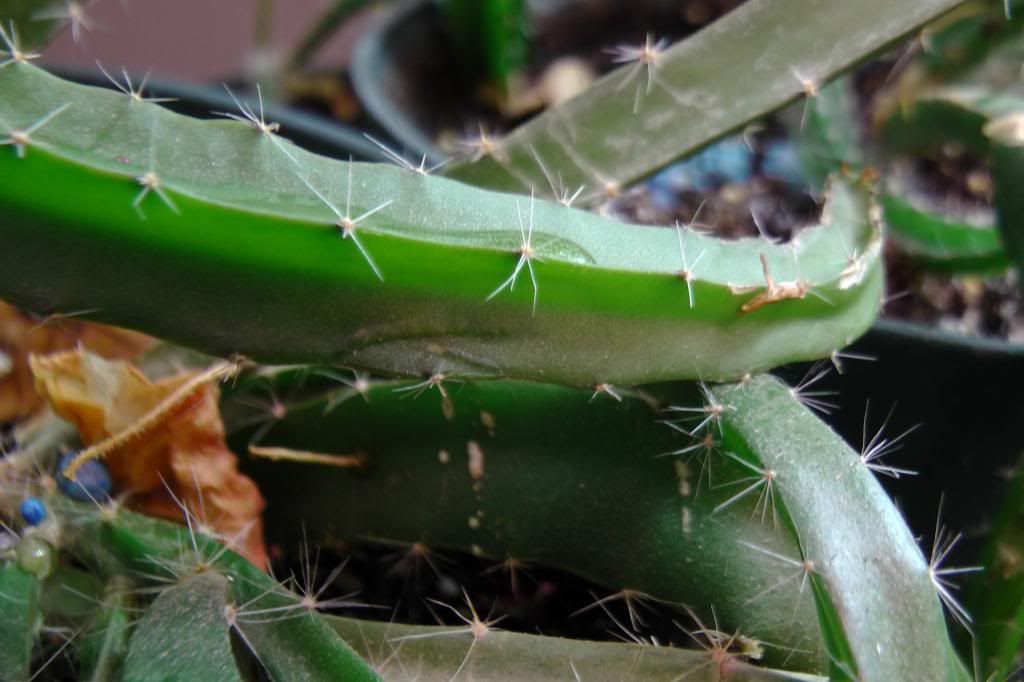 Longan
Longan (Dimocarpus longan; Icelandic: none): New seedlings, so I'm still learning.

 SpÝtalinn
SpÝtalinn ("The Hospital"): High-light area for sick plants in need of extra nourishment. There's a couple caryodendron sp. lurking in the back that are not at all sick, just freeloaders.
 Cocona
Cocona (Solanum sessiliflorum; Icelandic: none): Thusfar I've mostly had good things to say about plants indoors. Cocona... not so much. It's nearly died on me several times. It'd be a great indoor plant except it's *highly* susceptible to spider mites. I've taken to power washing the leaves every time I water and treating the leaves it as though it's a given that there's spider mites there. And what do you know, at long last, flower buds!

Thanks cocona!
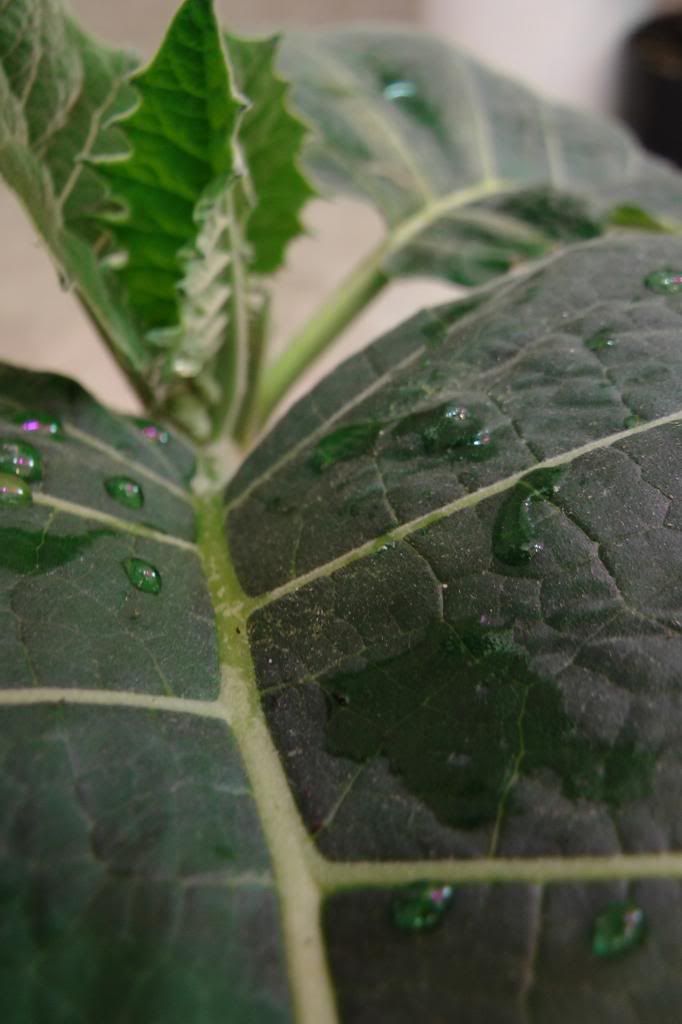
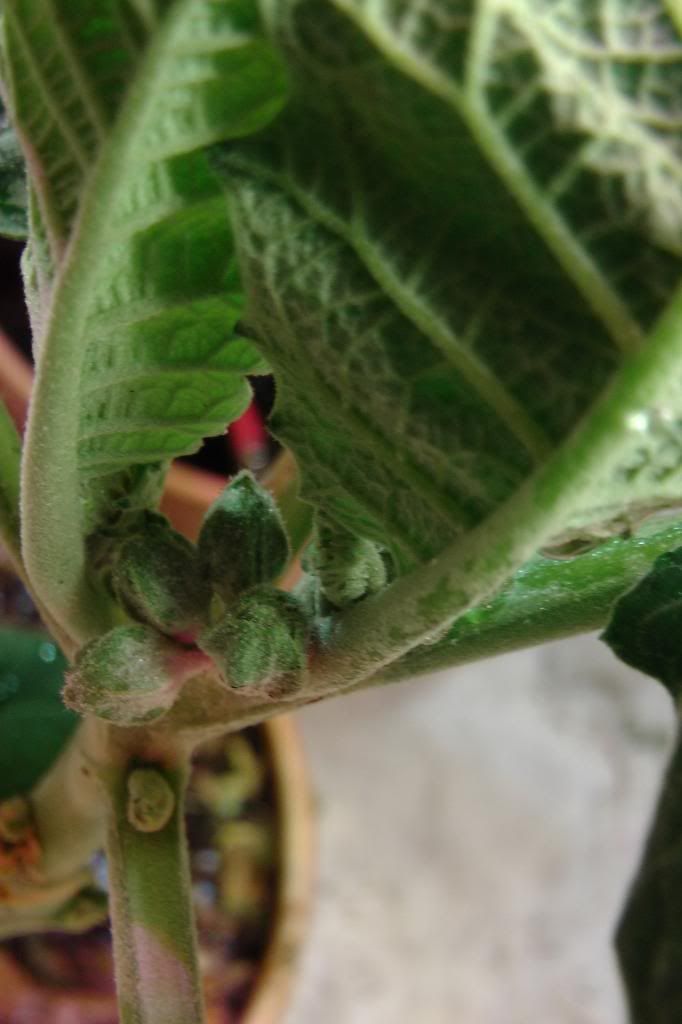
Let's move onto the shelves, where the smaller plants are. But before we get there, where do they come from? Well, this box:

And sometimes these trays as well:

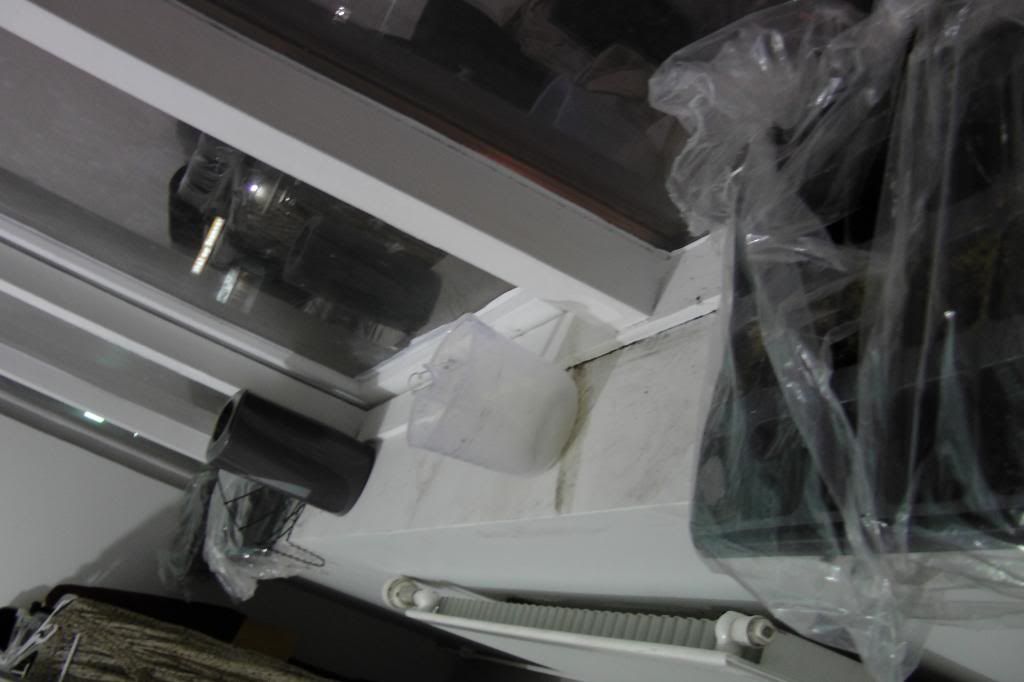
Except the shelf on the far right, that's SˇttkvÝ (quarantine)

The lemon verbena on the left had scale and the moringa on the right had a nearly-lethal spider mite infestation (it's another highly vulnerable species).
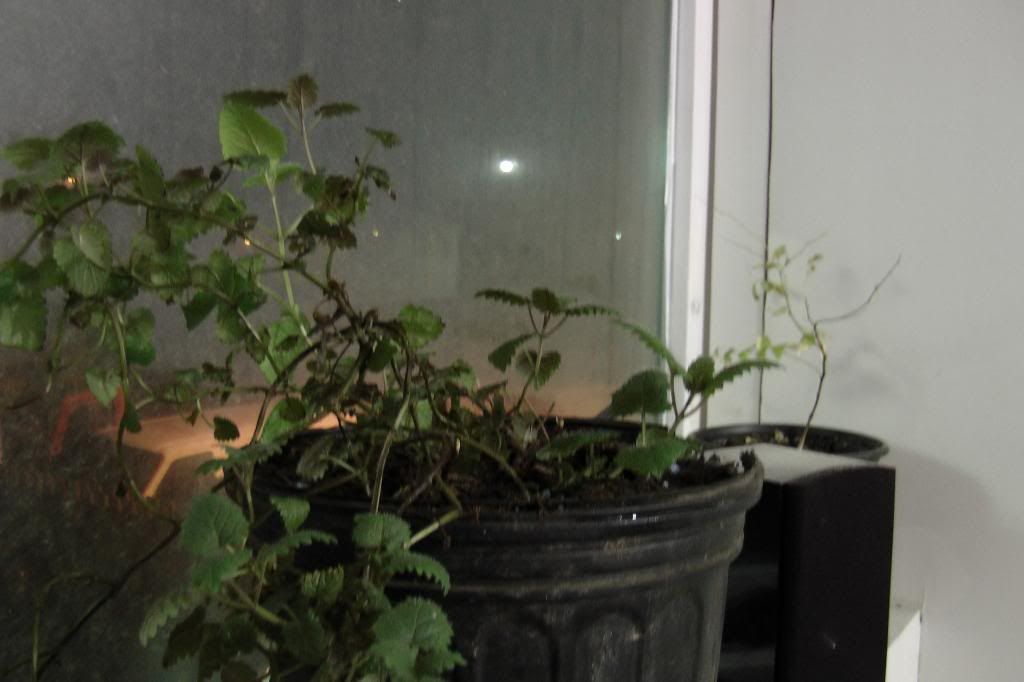
But anyway, new seedlings come to the bottom shelf until they've got leaves out:
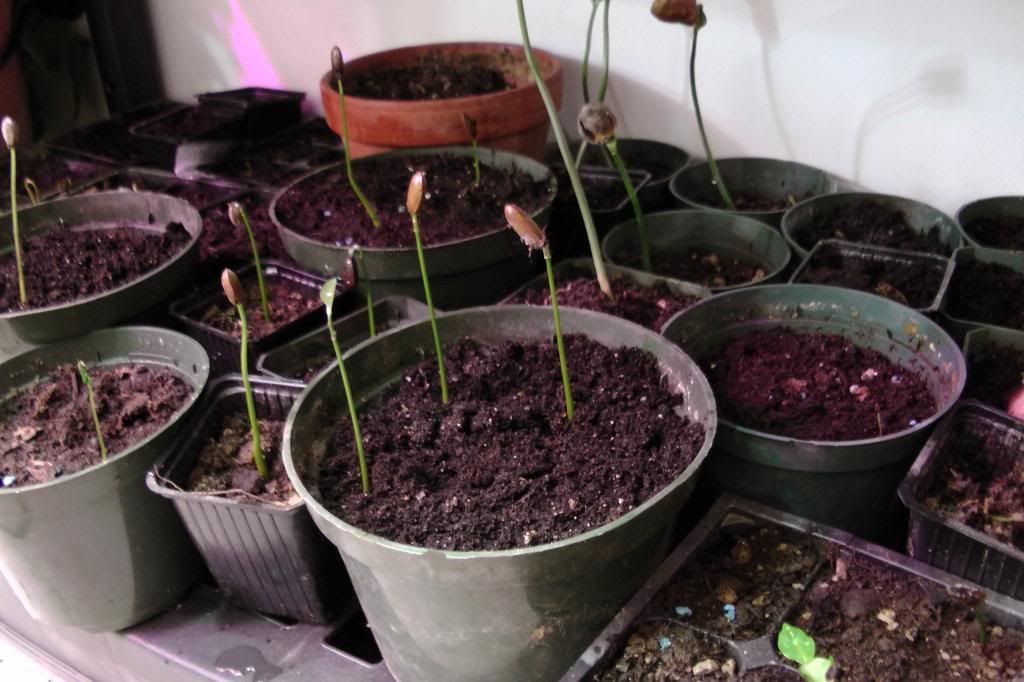 Dwarf inchi
Dwarf inchi (Caryodendron sp.; Icelandic: none). You saw some of its fully-germinated siblings in the hospital view. Inchi produces an edible nut, reportedly quite tasty. The tree is rare in cultivation so it's hard to find information about!
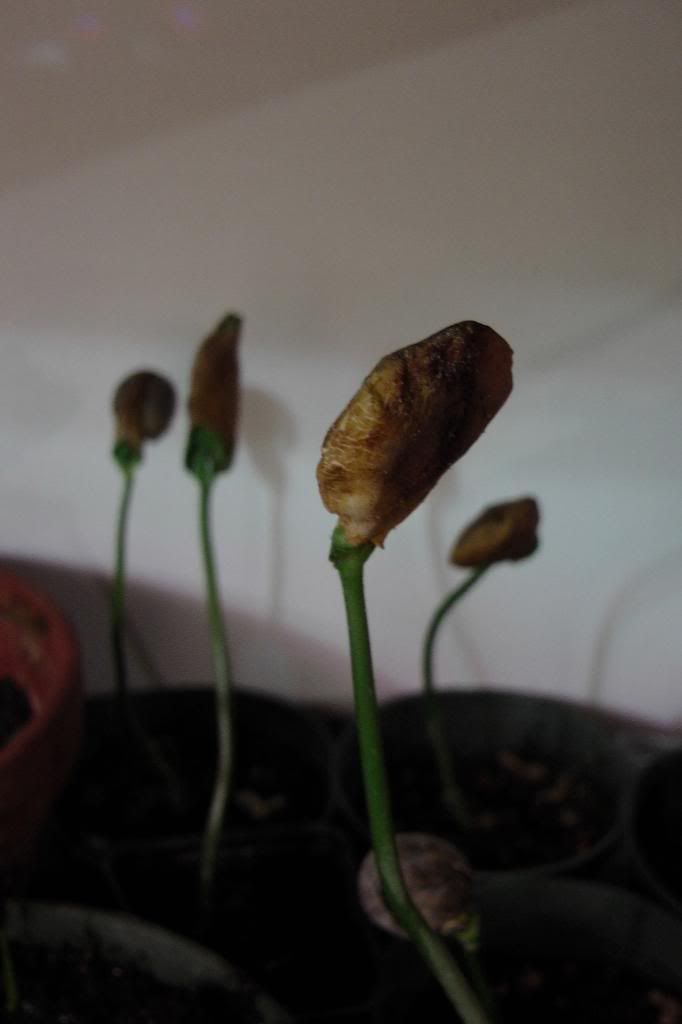 Guanabana
Guanabana (Annona muricata; Icelandic: none, but I've seen people sharing "graviola" health links on Facebook, so it'll probably end up as "gravݡla"). In order, shelf 1, 2, 4

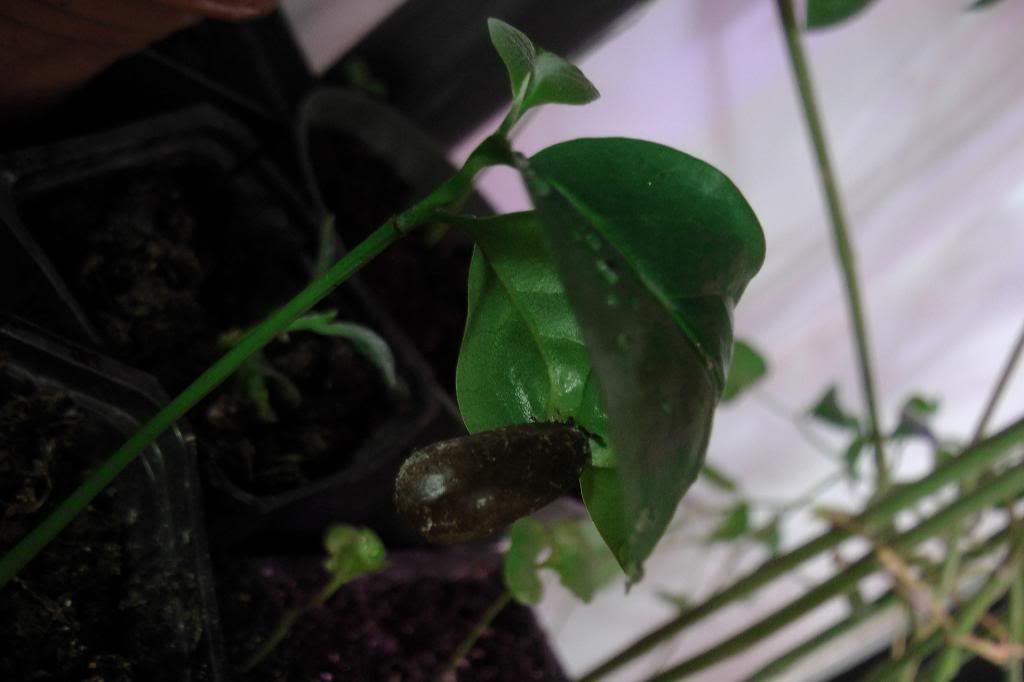
 Rollinia / biriba
Rollinia / biriba (Rollinia deliciosa; Icelandic: none). Oh, I can sooo not wait for fruit

In order, shelf 1, 2, 2, 4
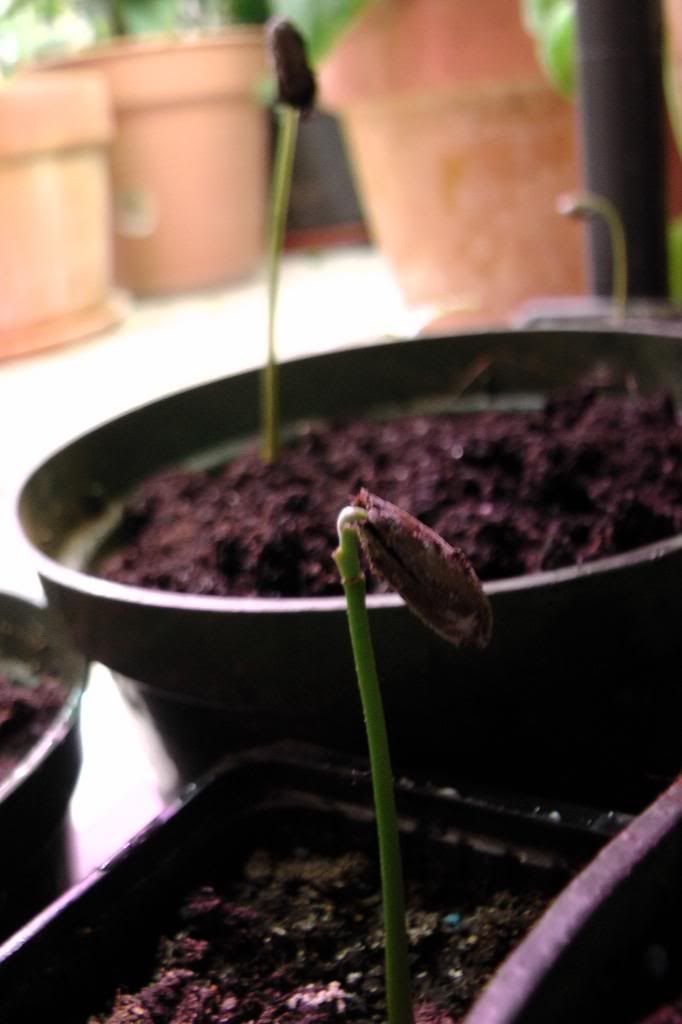
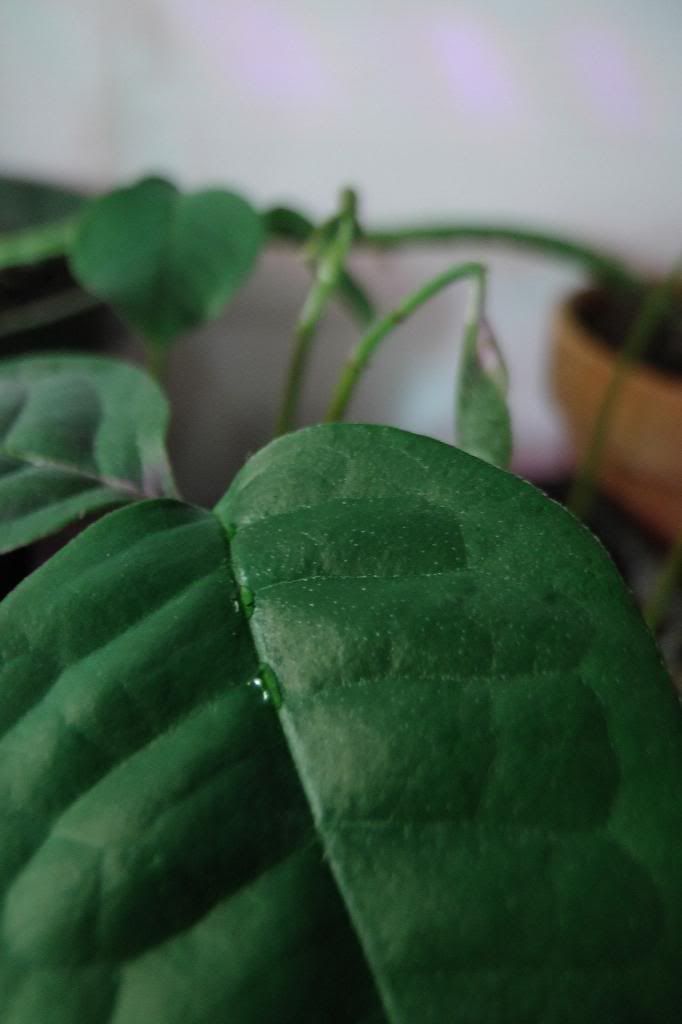
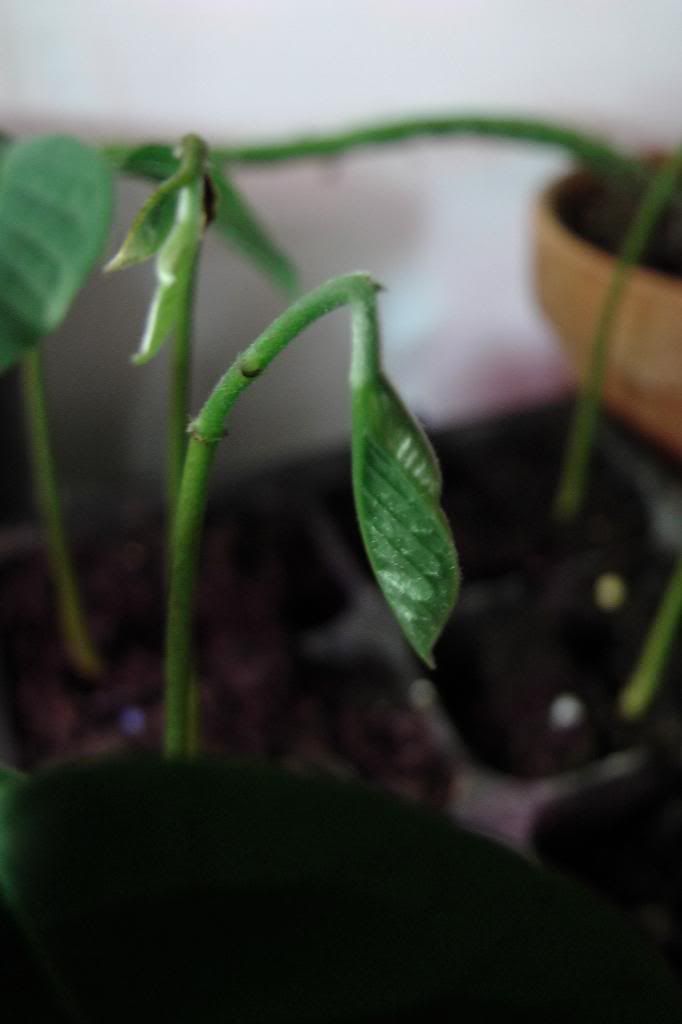

A couple rollinia, a couple Red Strawberry Guava (Psidium littorale; Icelandic: g˙ava), and a OH MY GOD WHAT THE HECK IS THAT? Lol, I have no clue - sadly, I can't read my handwriting on the label on this one. Well, time will tell if this strange creature survives.

 Jackfruit
Jackfruit (Artocarpus heterophyllus: Icelandic: none). Don't know much about raising them, but they germinate well!

Unfortunately I forgot to take a picture of my larger jacks - oh well!
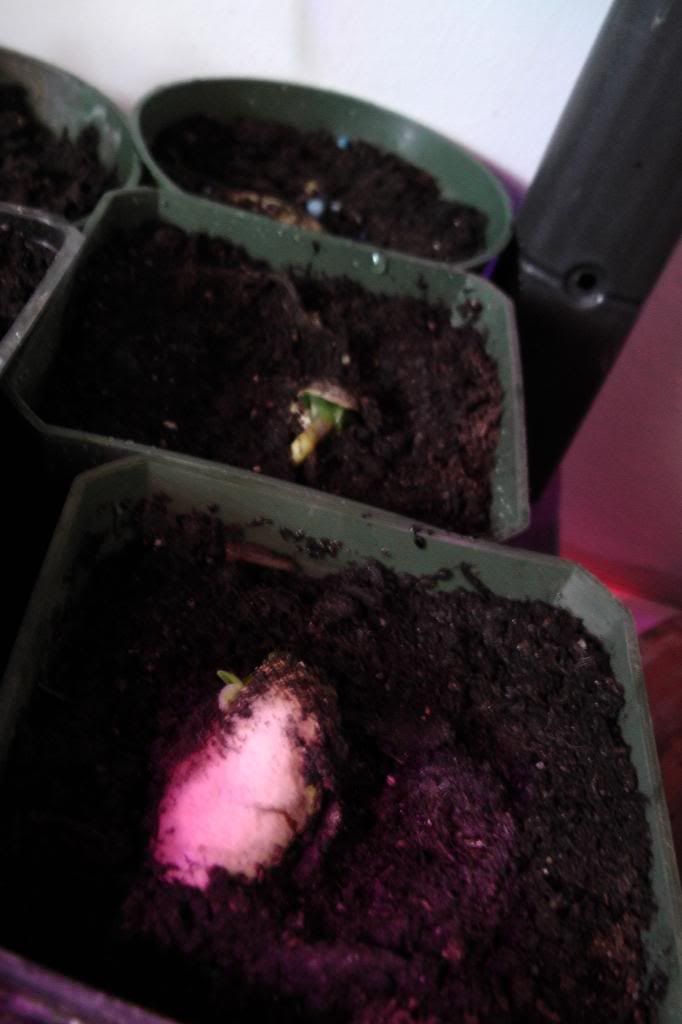 Pentagonia
Pentagonia (Pentagonia grandifolia; Icelandic: none): Oh, I really hope at least one of these makes it. They produce a fascinating-looking flower/fruit structure, but I've lost more of then than I care to admit to damping off. :Ů
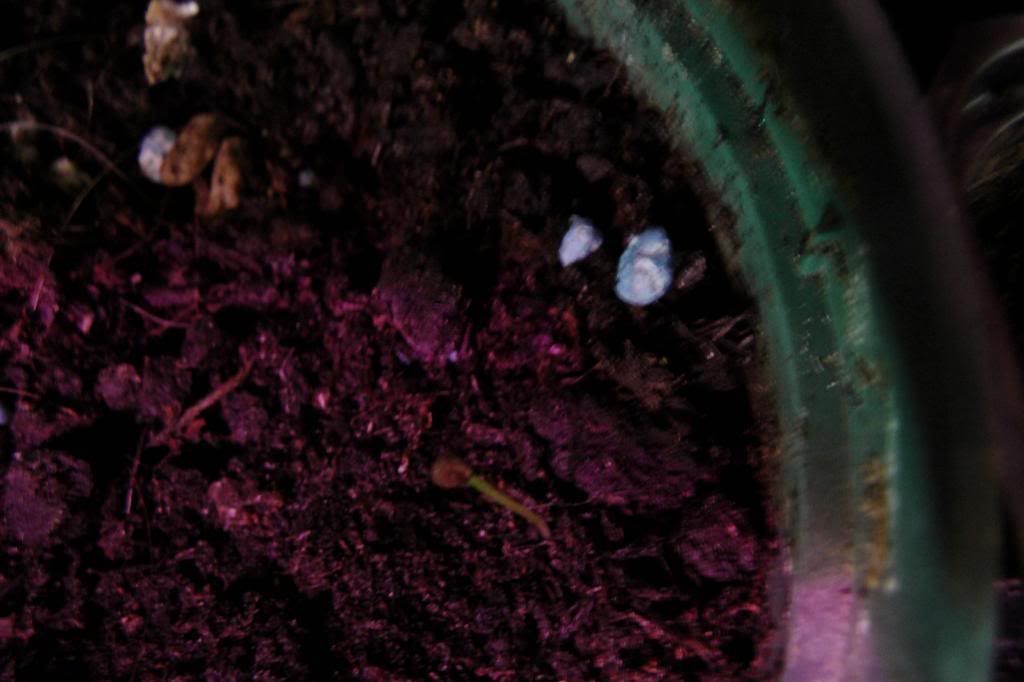
Second shelf: seedlings with newly opened true leaves and otherwise small seedlings.
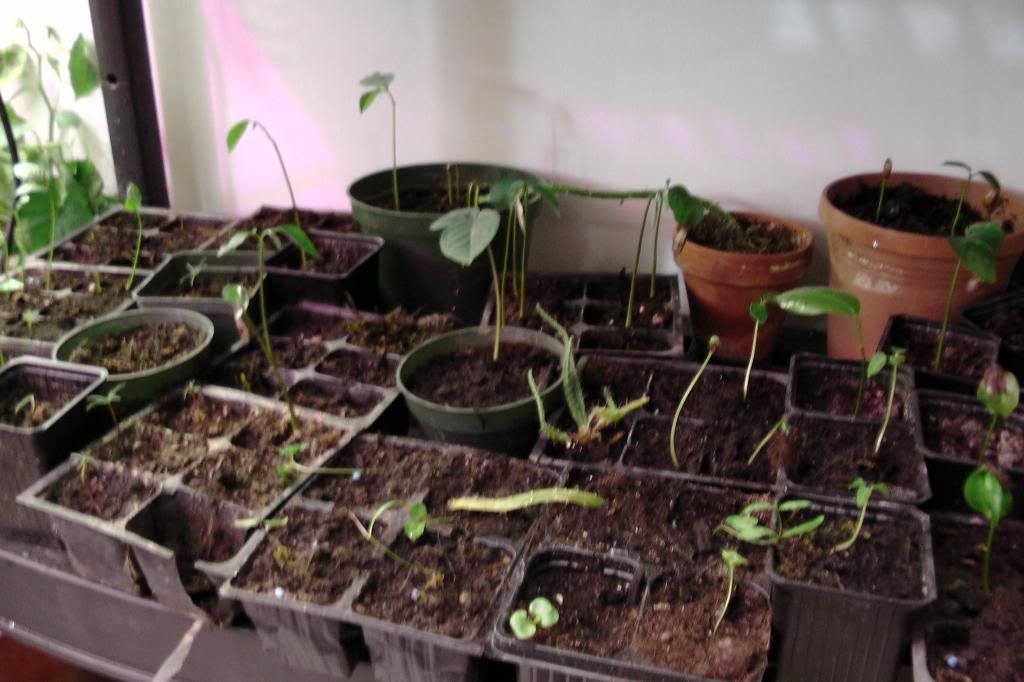 Bael
Bael (Aegle marmelos: Icelandic: none, but I have to keep resist spelling it BŠl with an "Š"

): Good germination rate even though the seeds weren't super-fresh. Never tried the fruit but I've seen people both rave about it and hate it.
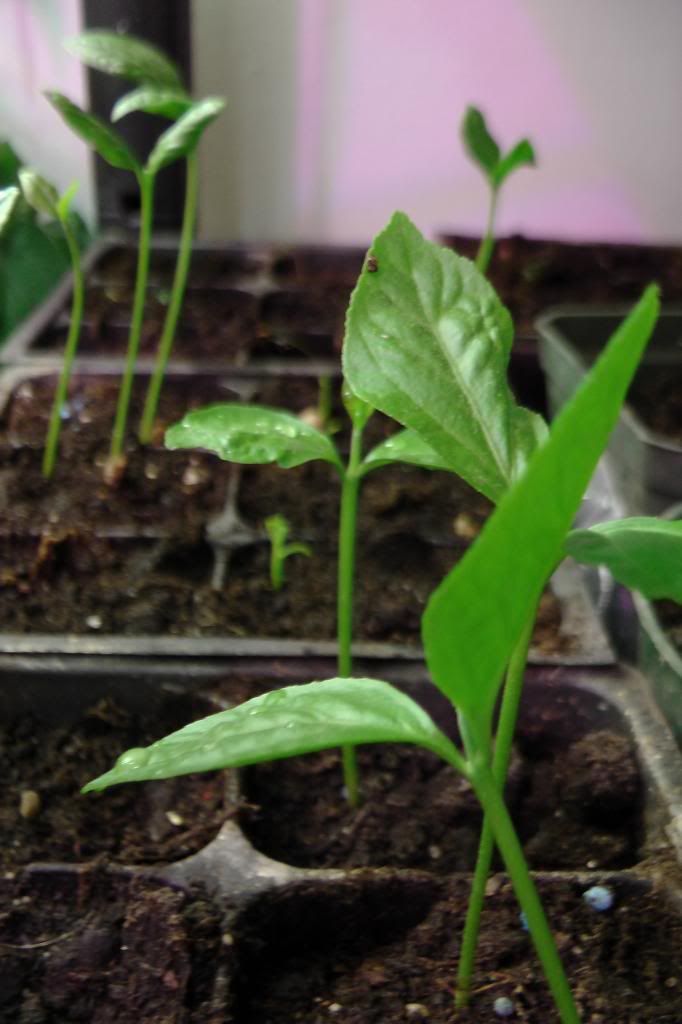 Giant Sequoia
Giant Sequoia (Sequoiadendron giganteum; Icelandic: risafura (lit: "giant pine")): Okay, not a tropical, although it does have limited cold tolerance! Biggest tree in the world, in baby pictures. I hope to end up with 30 of them and I'm hoping at least one or two will survive the climate here.
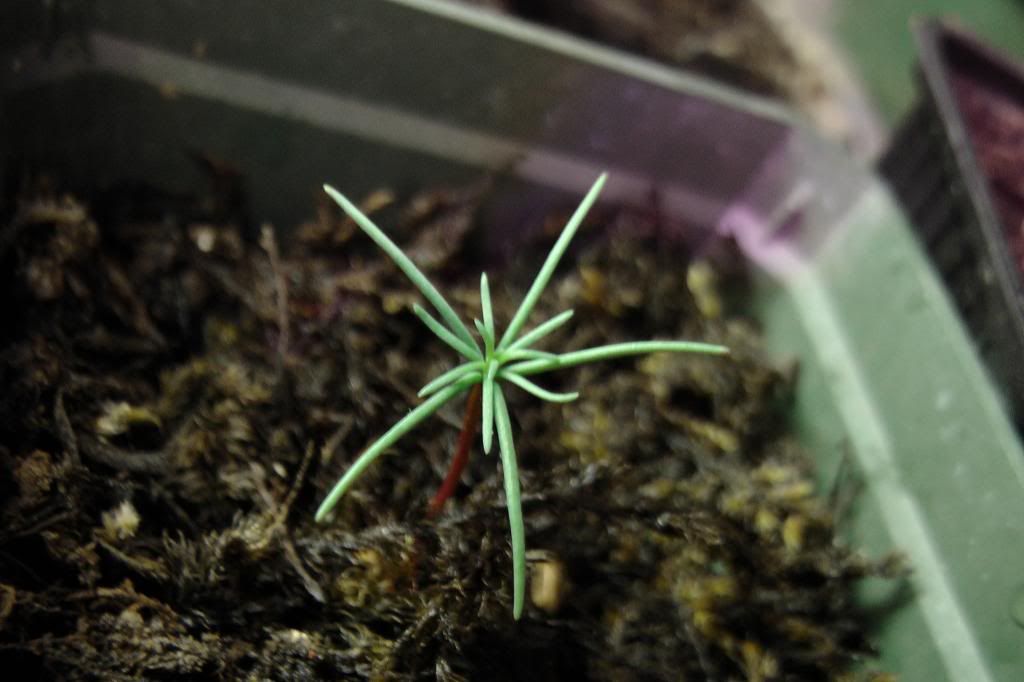 Western Redcedar
Western Redcedar (Thuja plicatia; Icelandic: rÝsalÝfviur (lit: "giant life wood")): Okay, even *less* of a tropical, but... basically, a fallback plan. Gets to about 2/3rds the height and 2/3rds the width of a sequoia, but still a massive tree, and more importantly, adapted to cold climates. But man, these seedlings are delicate.
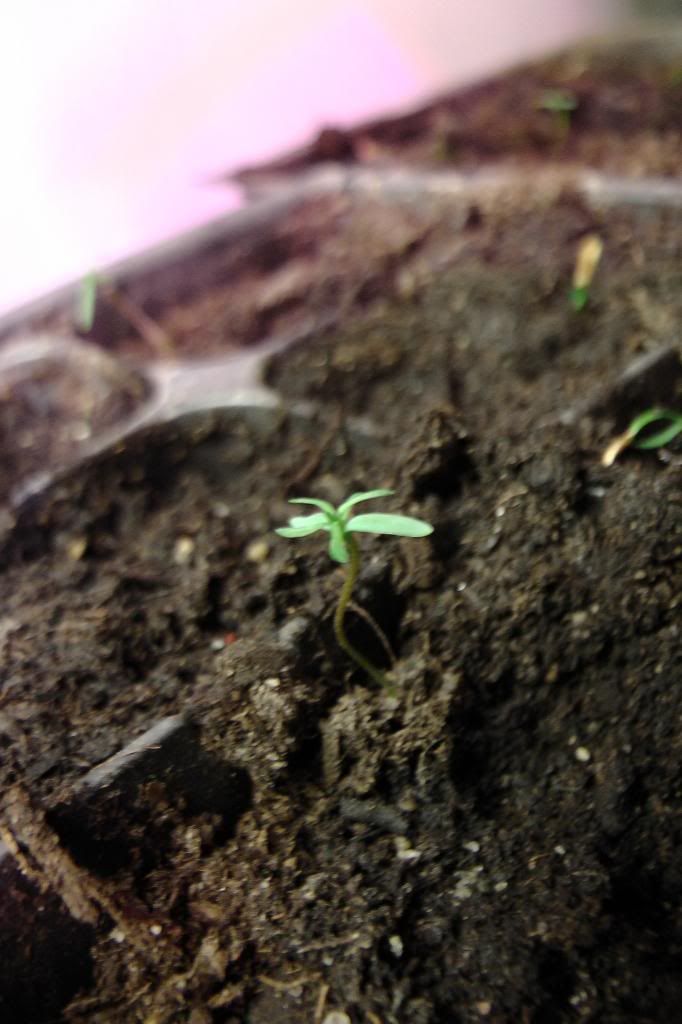 And this one is...
And this one is... is... dang, I don't know, because the builder moved these seedlings when they were on the ground and didn't move their label with them! :■ If anyone has a guess, let me know!
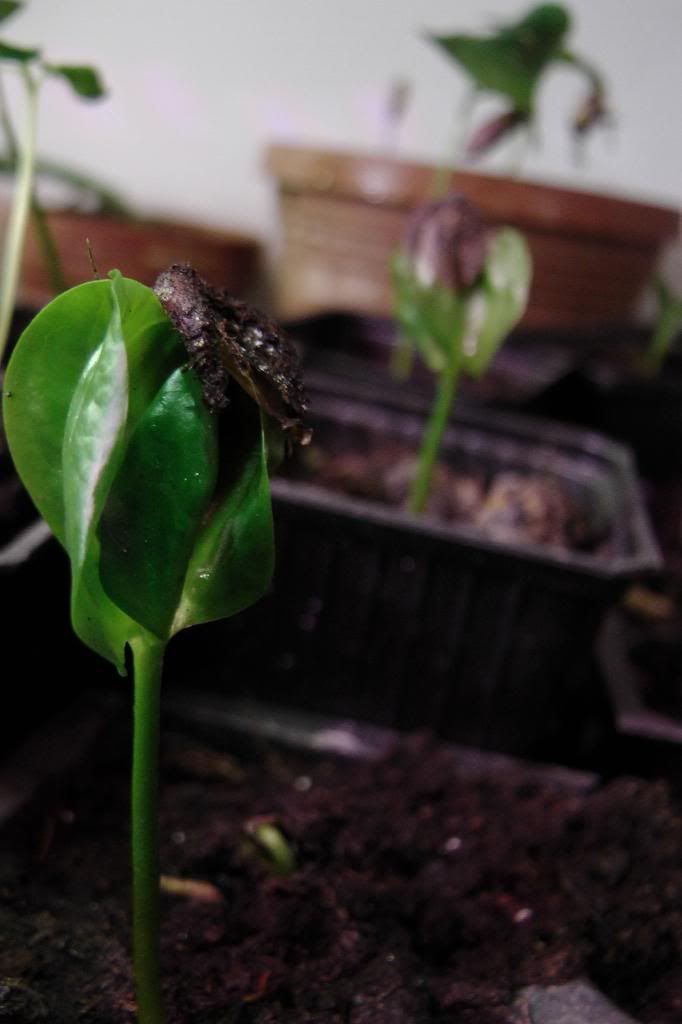 Blackberry Jam Fruit
Blackberry Jam Fruit (Randia formosa; Icelandic: none). Has little, neat-looking seeds. Supposedly tastes like blackberry jam. We'll find out!
 Papayuelo
Papayuelo (Carica goudotiana): Has neater-looking seeds. Seriously, the seeds are like tiny kiwano melons

While the plant is related to papaya, I really hope it tastes better than papaya!

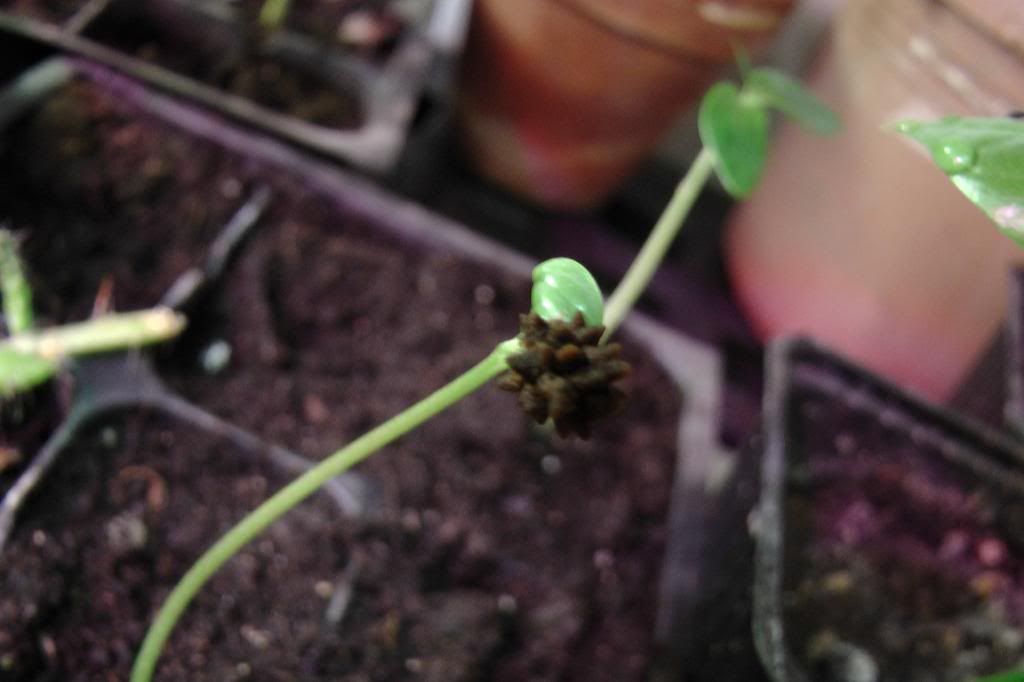 Dabai
Dabai (Canarium odontophyllum; Icelandic: none): Supposedly tastes a bit like avocado, but you have to soak it first. I'm definitely curious.

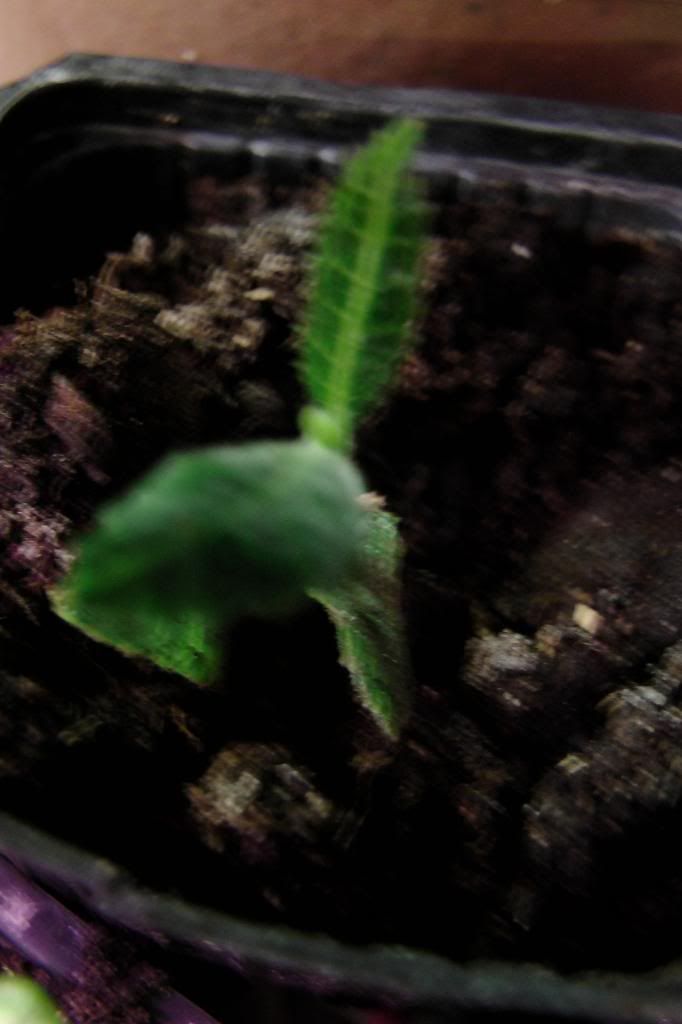
Third shelf: power converter, gardening supplies, seedlings in oversized pots, and salak.
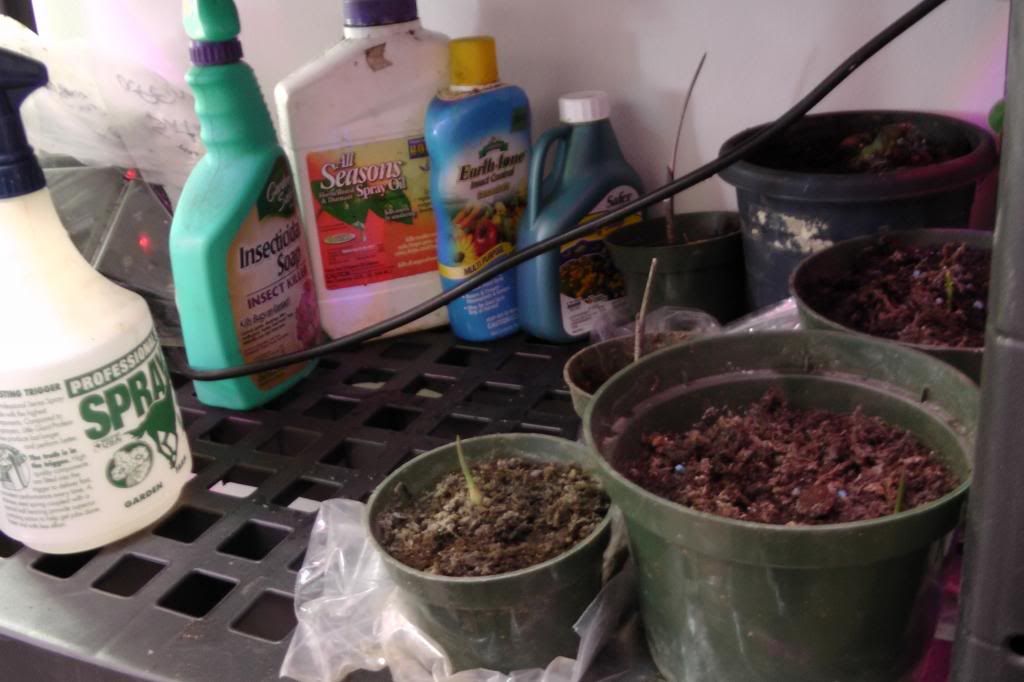 Red Salak
Red Salak (Salacca affinis; Icelandic: none): Salak (aka, snakefruit) is a really alien-looking plant at all stages of life, but especially when young. Someone posted a thread recently about how they germinate, involving sticking a plug out, which then gets branching spindly roots. Then it pushes a column up, then the column puts out a tall spine... eventually it'll become leaves, supposedly

 Bali Salak
Bali Salak (Salacca zalacca var bali; Icelandic: none): I really hope that the "spine" here is supposed to be brown and woody for bali salak, because it's green and lifelike for all my S. affinis, but brown and woody for all my S. zalacca.
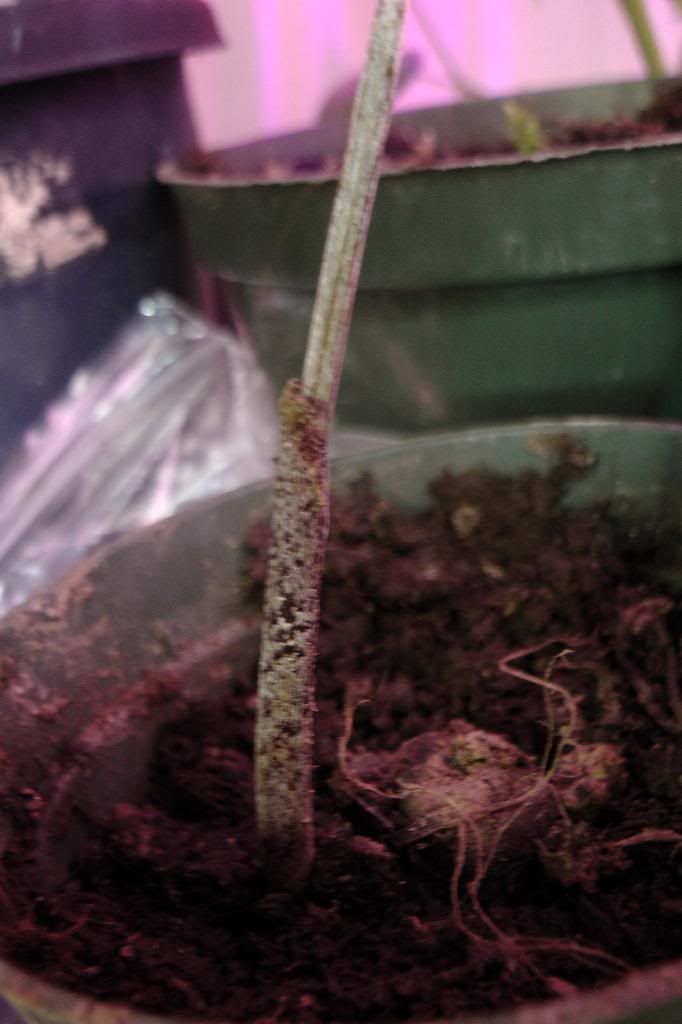
Fourth shelf: moderate-sized young seedlings
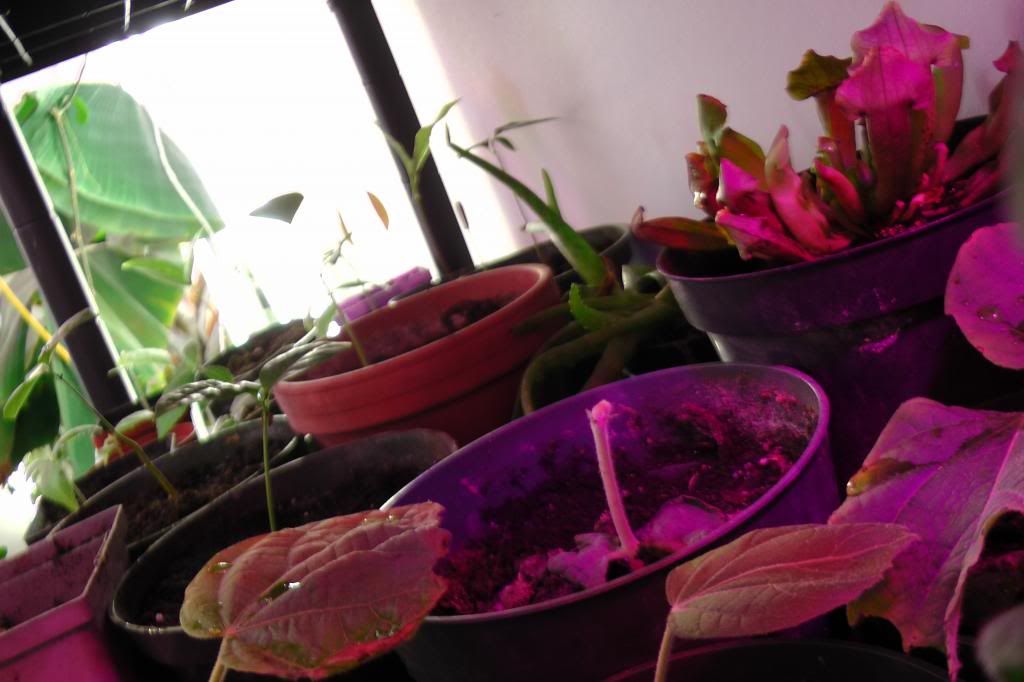 "SL sapote"
"SL sapote" (Matisia sp.: Icelandic: none). Supposedly fruits like jaboticaba, but with 8cm fruit with scant pulp. I've been having a problem with some of them losing leaves to what appears to be a fungus (see the below pics); any tips would be appreciated!
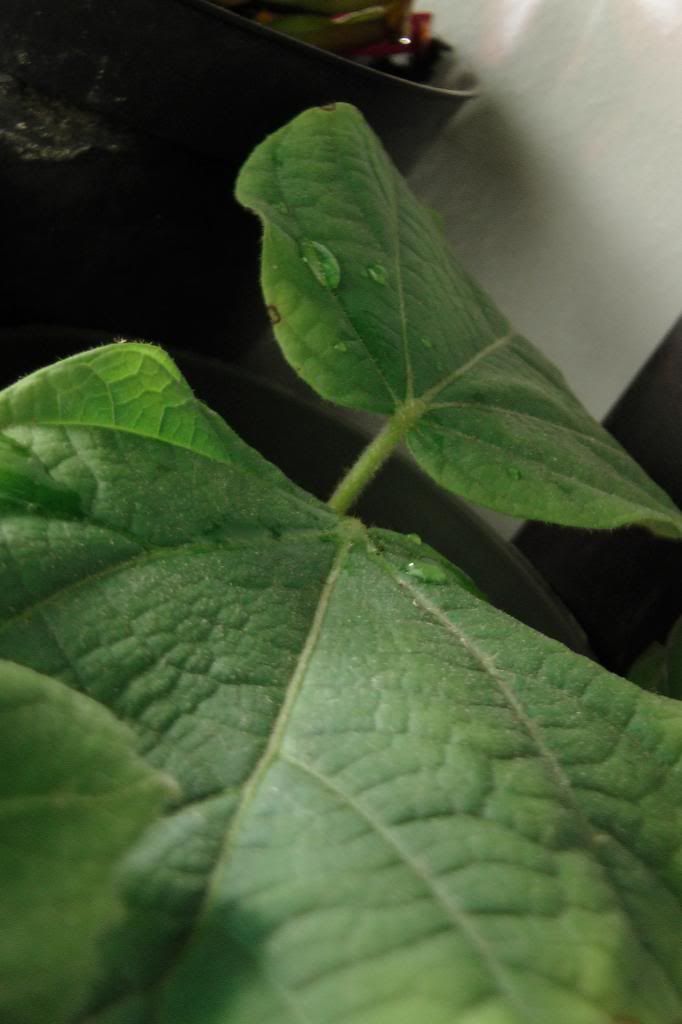
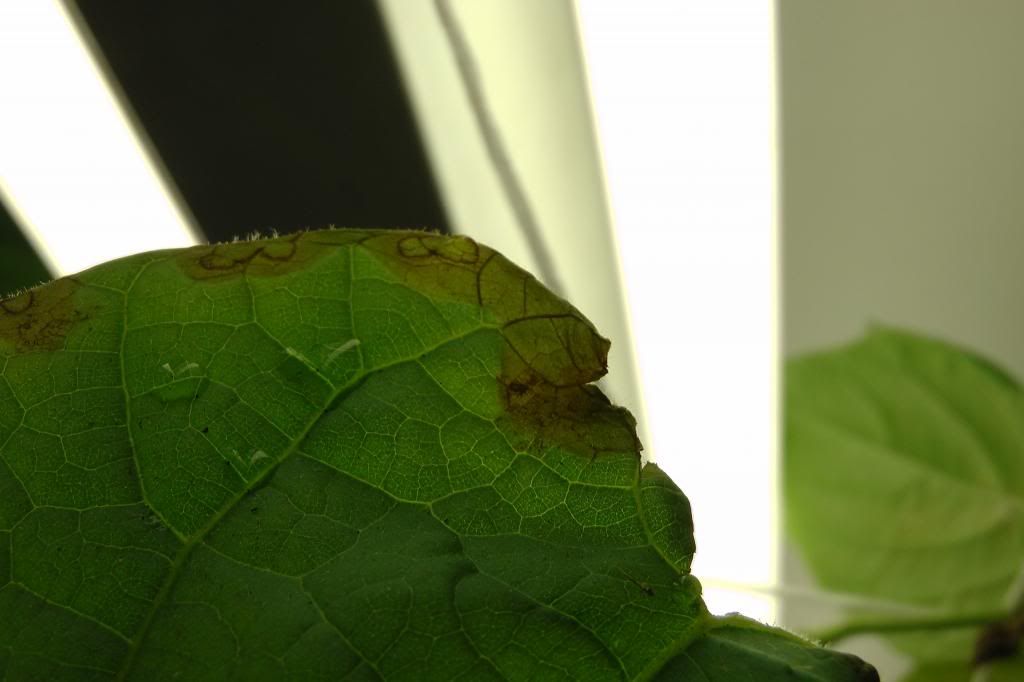
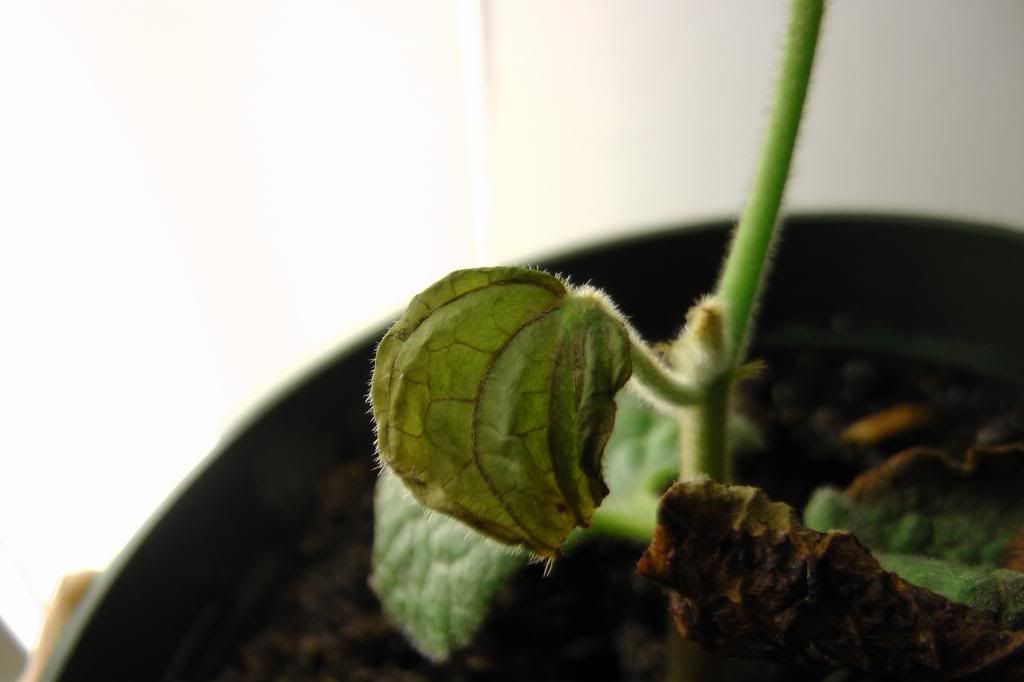 This
This carnivorous plant was another store purchase. Sadly, they didn't list the species. :Ů
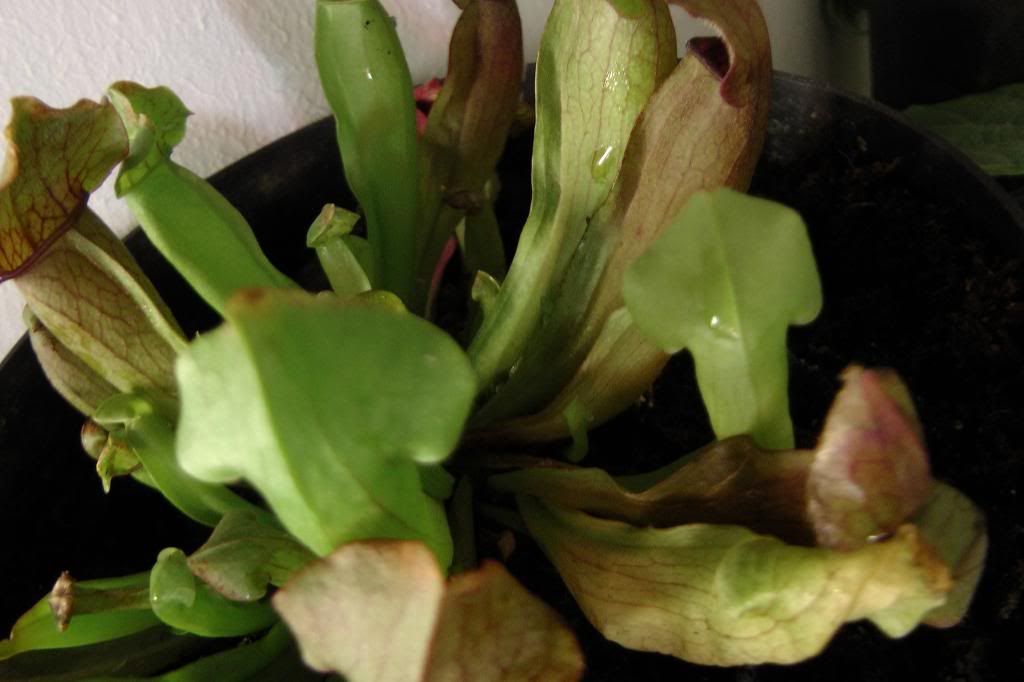 Pomegranate
Pomegranate (Punica granatum; Icelandic: granatepli): I treat them so badly but they keep trying

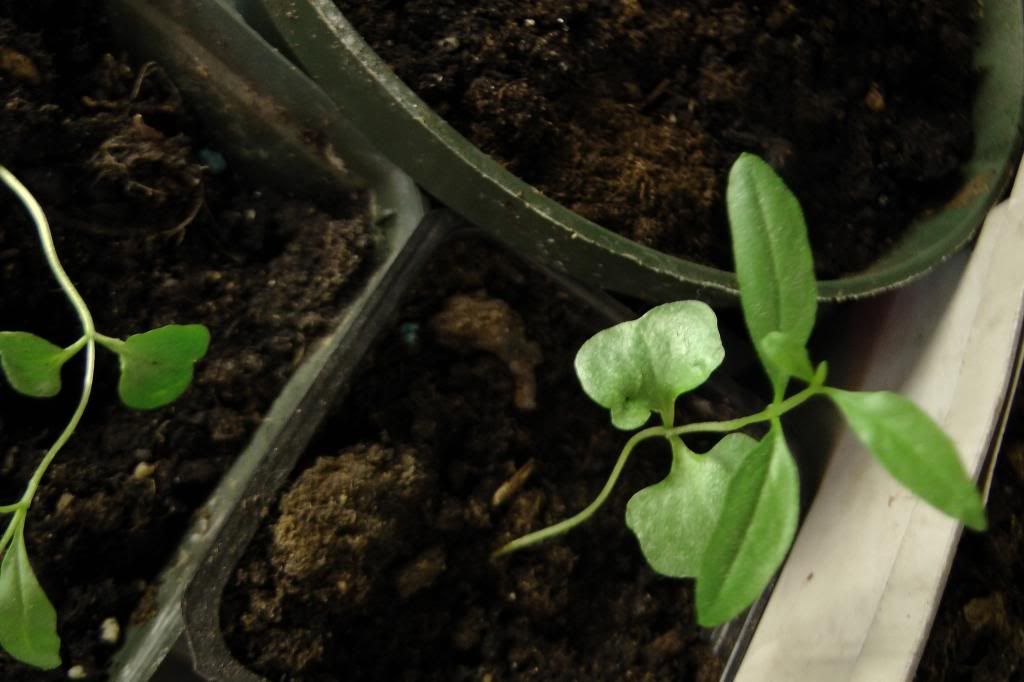 Marang
Marang (Artocarpus odoratissimus; Icelandic: none): Oh I so can't wait to try this fruit... same genus as jackfruit, but often said to be even better.
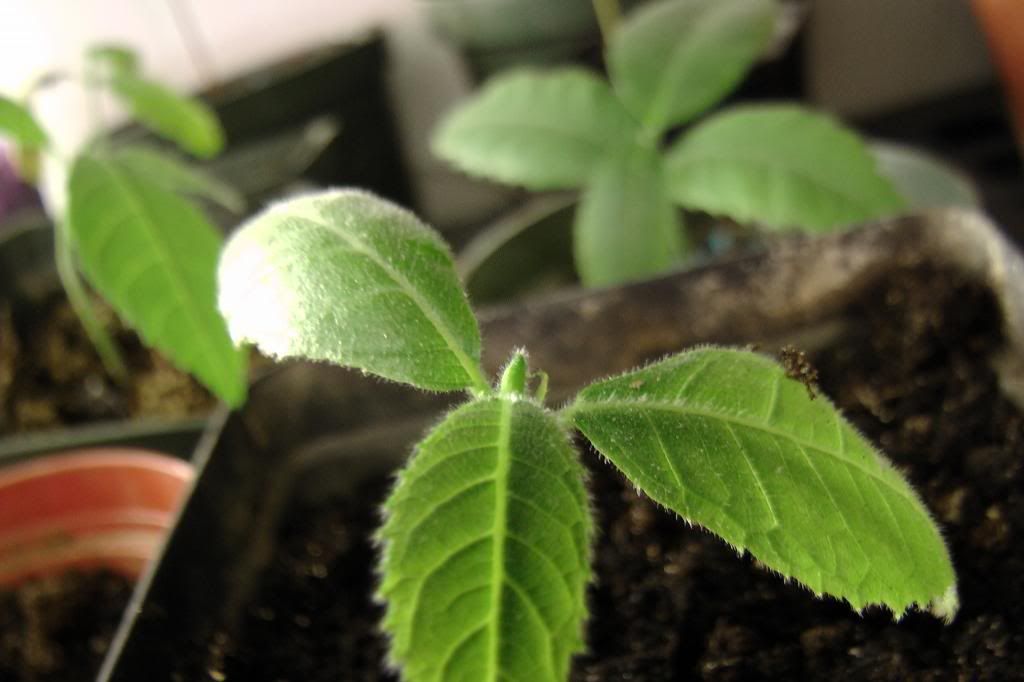 Herrania
Herrania (Herrania sp.; Icelandic: none): A relative of chocolate. Fruits in a similar manner. Another fruit I really look forward to trying.

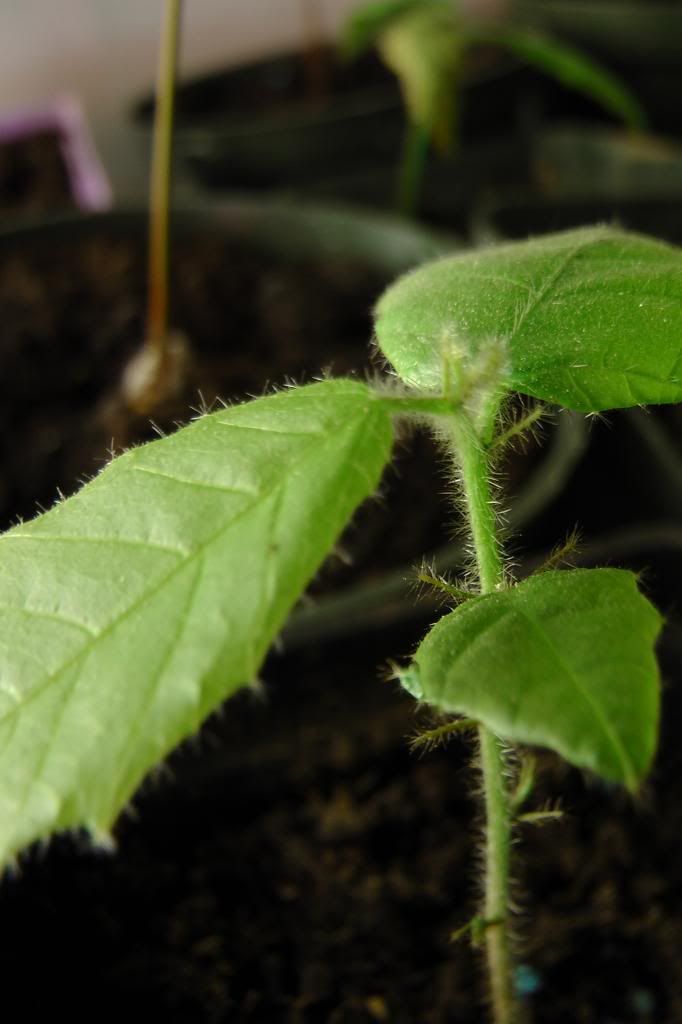 Yoco
Yoco (Paulinia yoco; Icelandic: none): Both the plants in the foreground and background are yoco - young leaves are reddish. A relative of guarana, with very high caffeine content. Vining, so that'll work out nice for me, it's easy to find space for vines and they're good at intercepting "lost light".
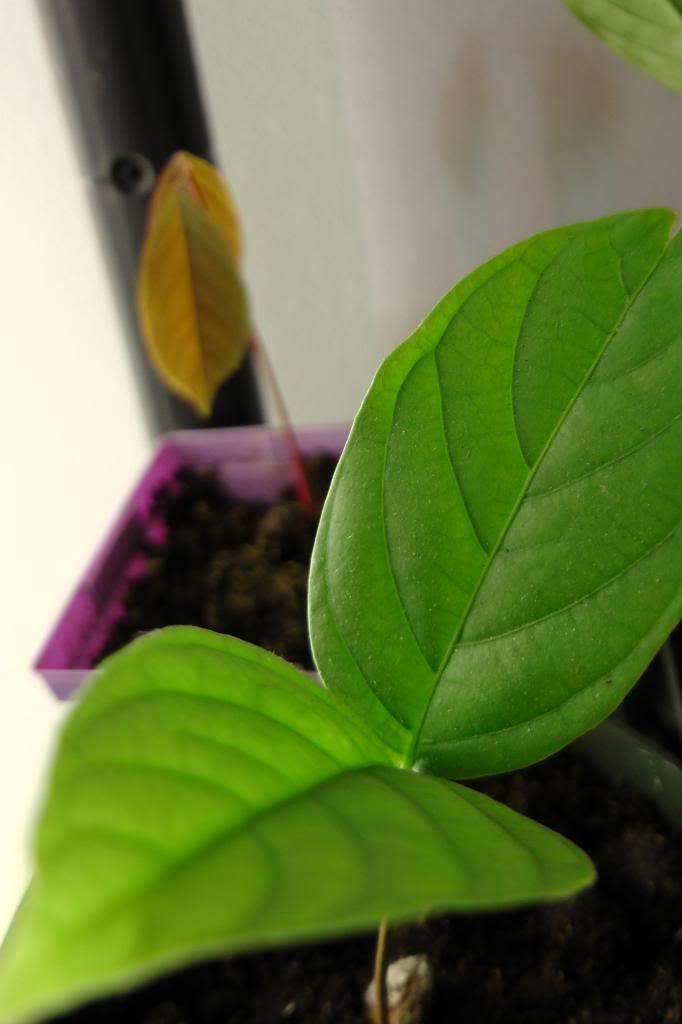
And now, for the top shelf:
Pineapple (Ananas comosus; Icelandic: annanas): Just a rooted supermarket pineapple. But hey, it's a start

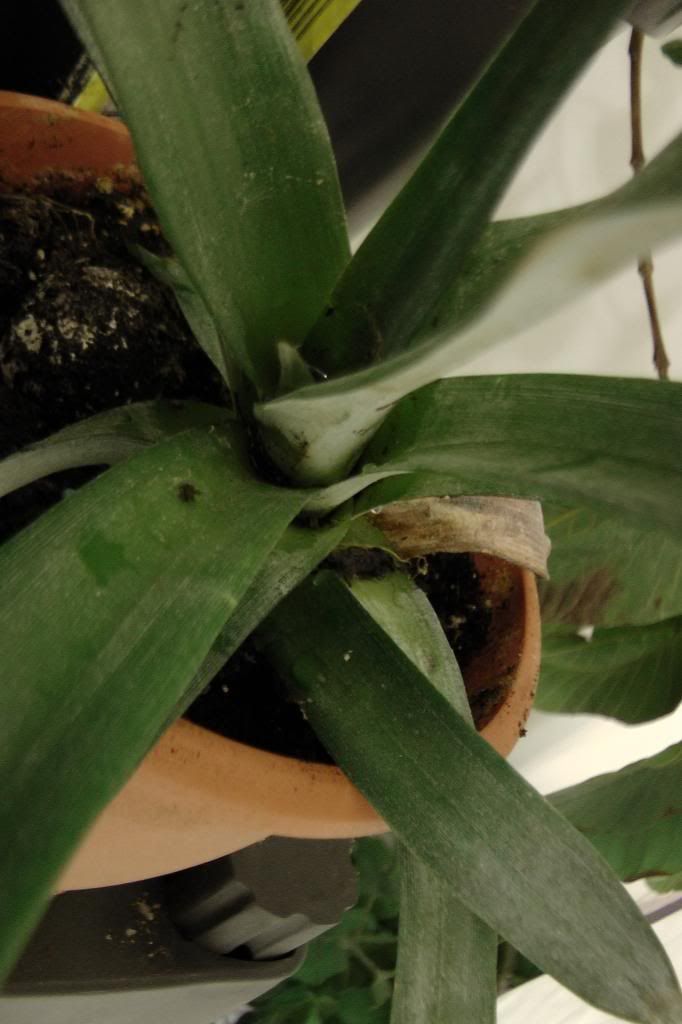 Guava
Guava (like above): I've got an older guava here as well. Started growing slow but has really picked up the pace as of late. Minor to moderate mite susceptibility. I gave it a nice place by an LED light because I'd really like to get it to fruiting to find out just what variety of guava it is!
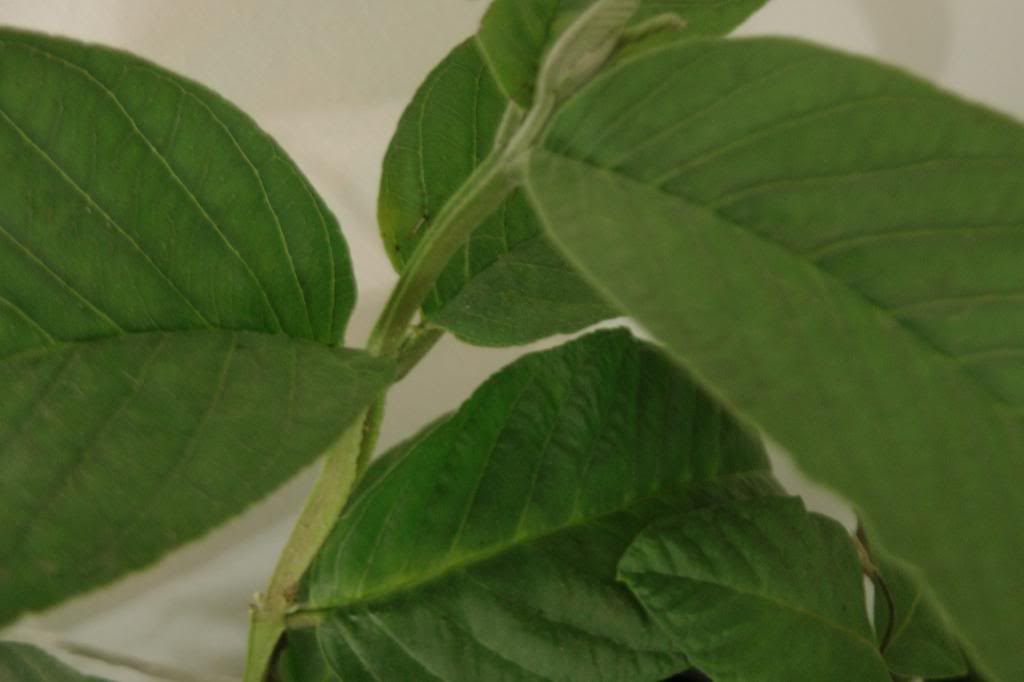
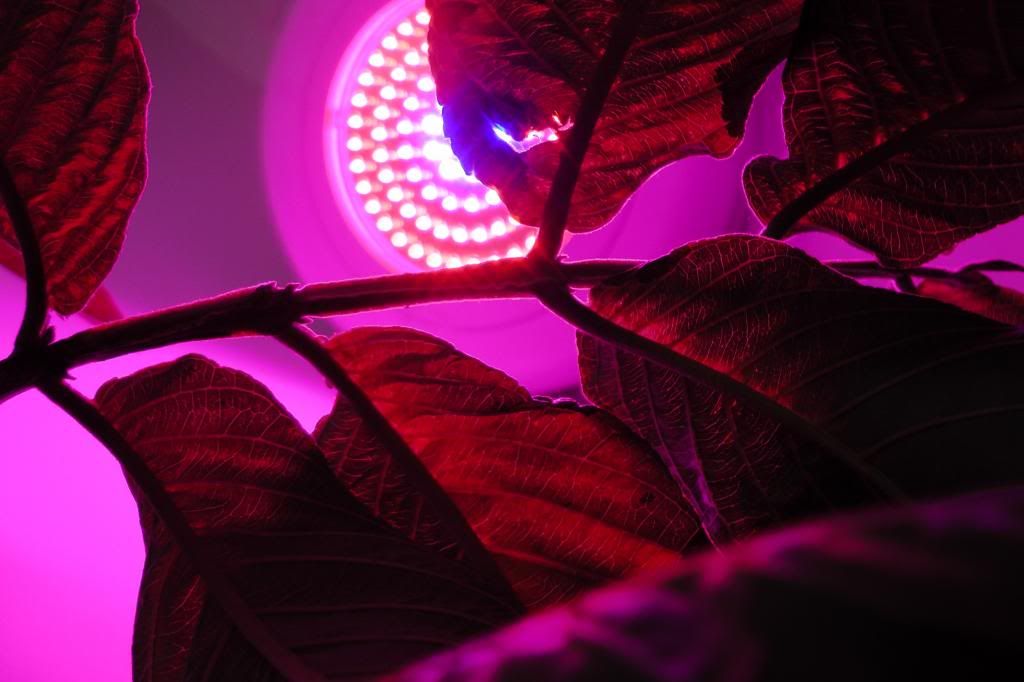 Vanilla
Vanilla (Vanilla planifolia; Icelandic: vanilla): My prior experience with them says they're quite susceptible to root rot and grow slowly while young. I've got three this time around, hopefully at least one will make it

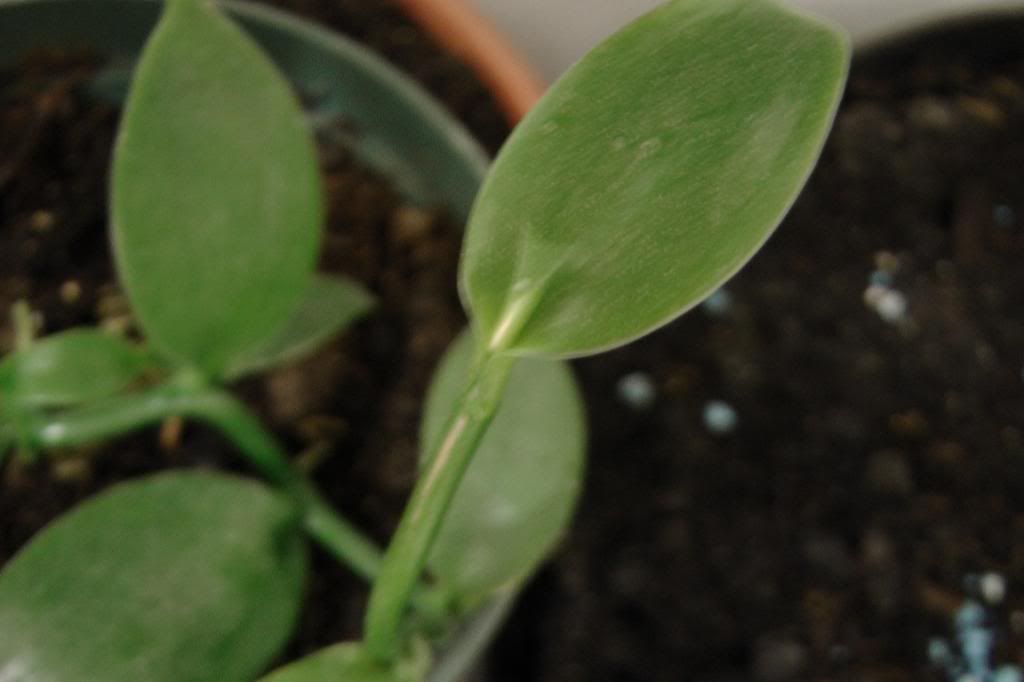 Santol
Santol (Sandoricum koetjape; Icelandic: none): First pick is my biggest but weird-looking santol. The next pic is a smller but regular one. And the third is what they look like when germinating - kind of weird, the seed comes up, then stops, then the plant comes out the side.
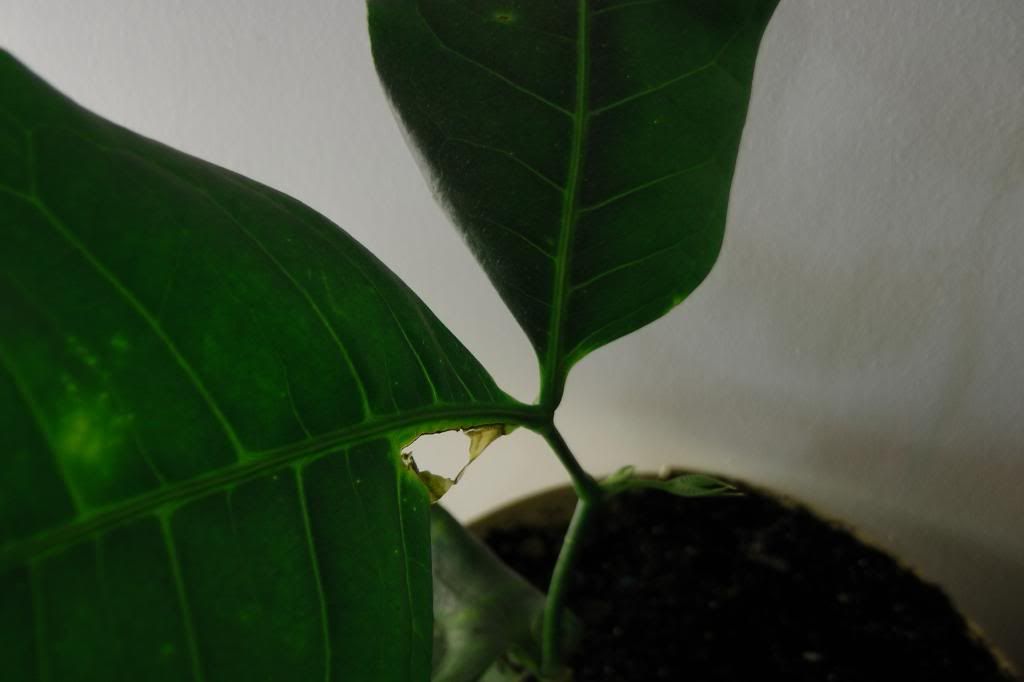

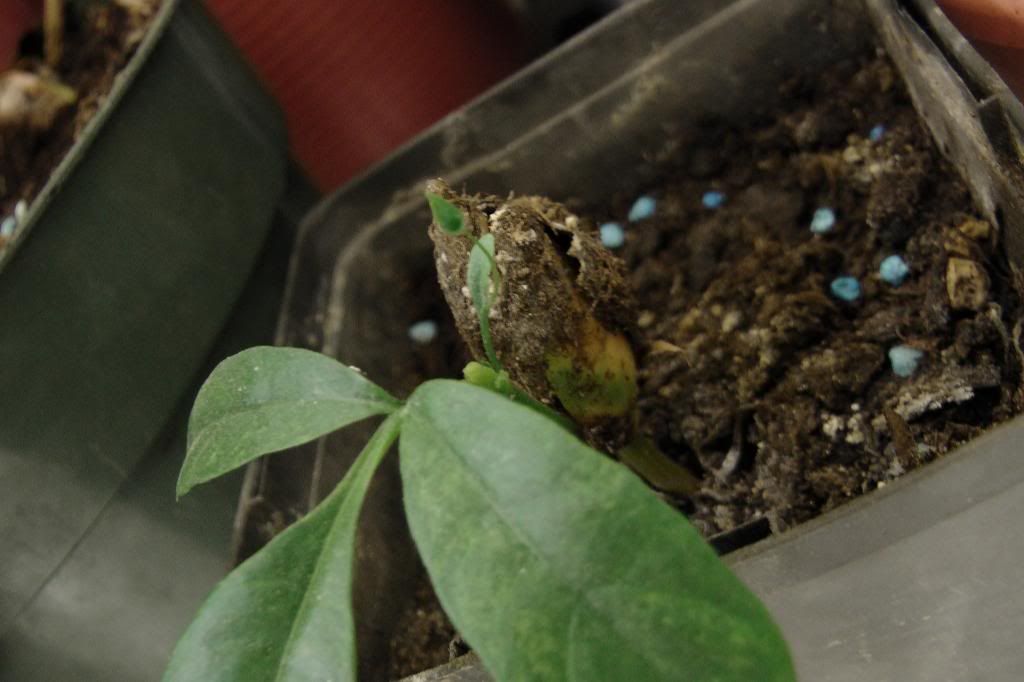
And of course, I've got probably about 10 species which have germinated but not yet come out of the ground (jaboticaba, a couple really lucky miracle fruit, cabelluda, jamun, a number of eugenia and garcinia sp., etc) and another 10 or so which haven't yet germinated (as far as I know) - macadamia, cola, nutmeg, etc.
Finally, just a couple random pics to wrap up

1) First person to guess what this is a picture of gets five Karen Points:
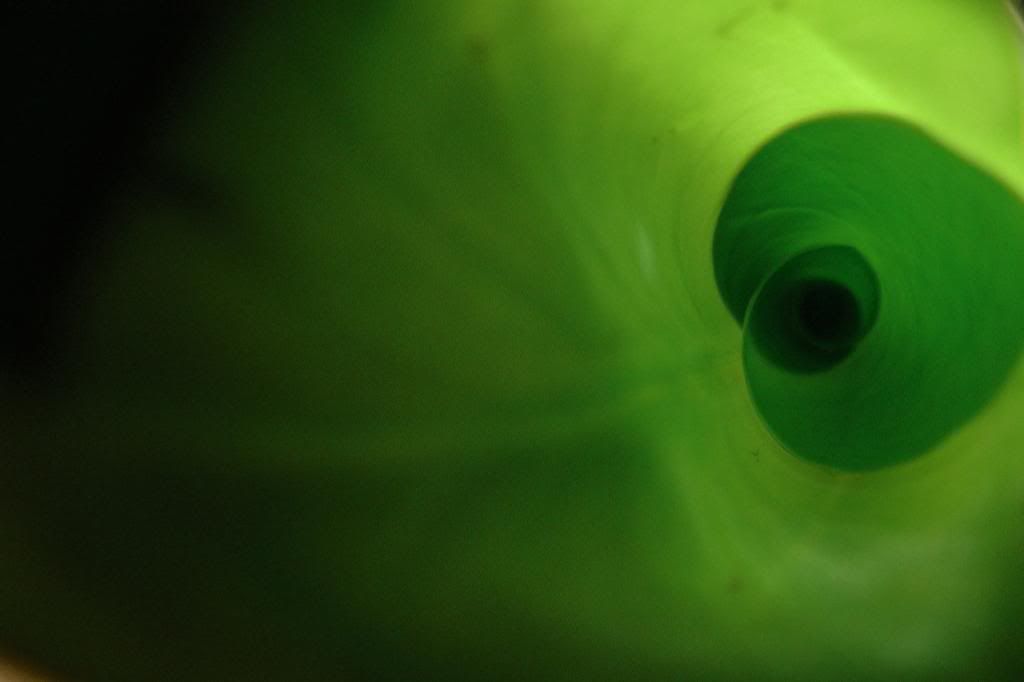
2) My supplies. Though I still need to fetch my container (~10kg) of micro and macronutrients.

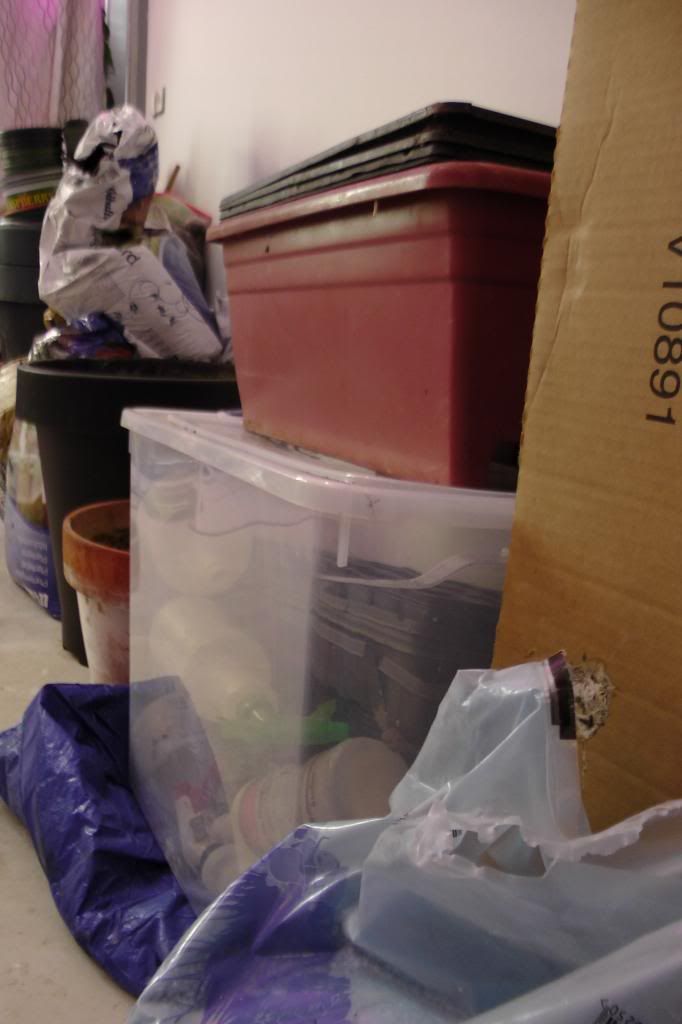
3) Icelandic hose fixtures are totally incompatible with US ones. It's nice having a spigot in my plant room!

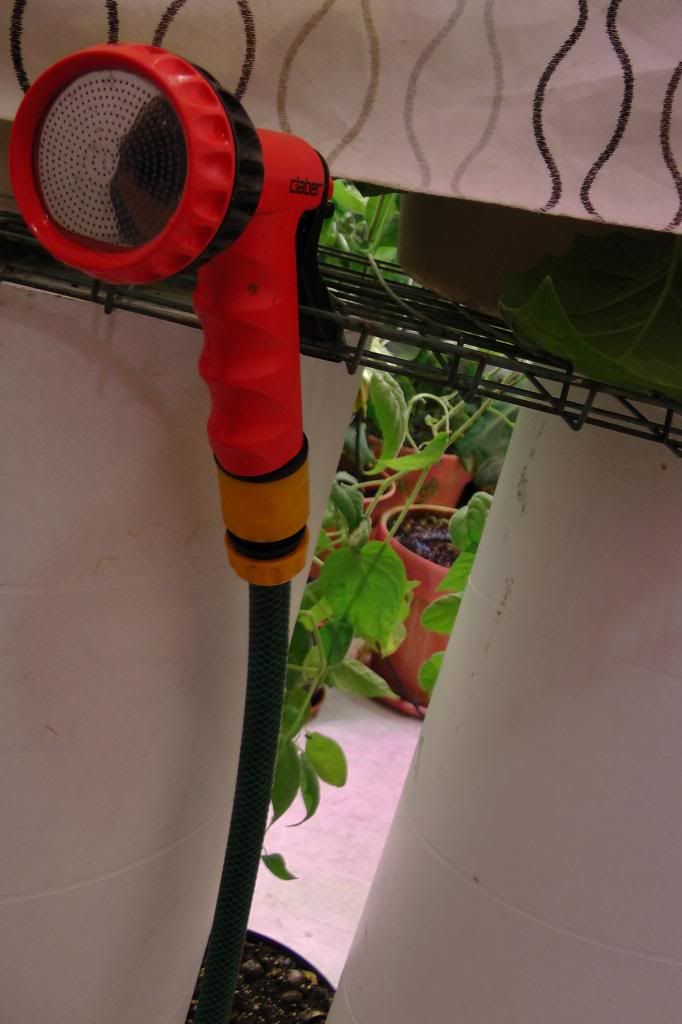



 Really good camouflage, too, at least on tomato.
Really good camouflage, too, at least on tomato.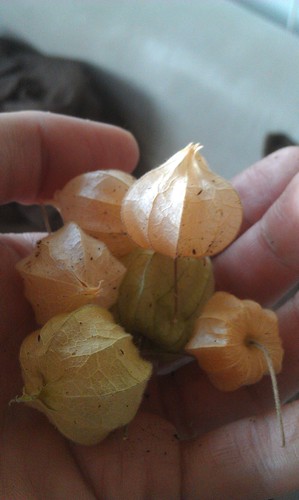
 Incredible space you have, so much room to expand and the plants look very happy and healthy.
Incredible space you have, so much room to expand and the plants look very happy and healthy.











































































